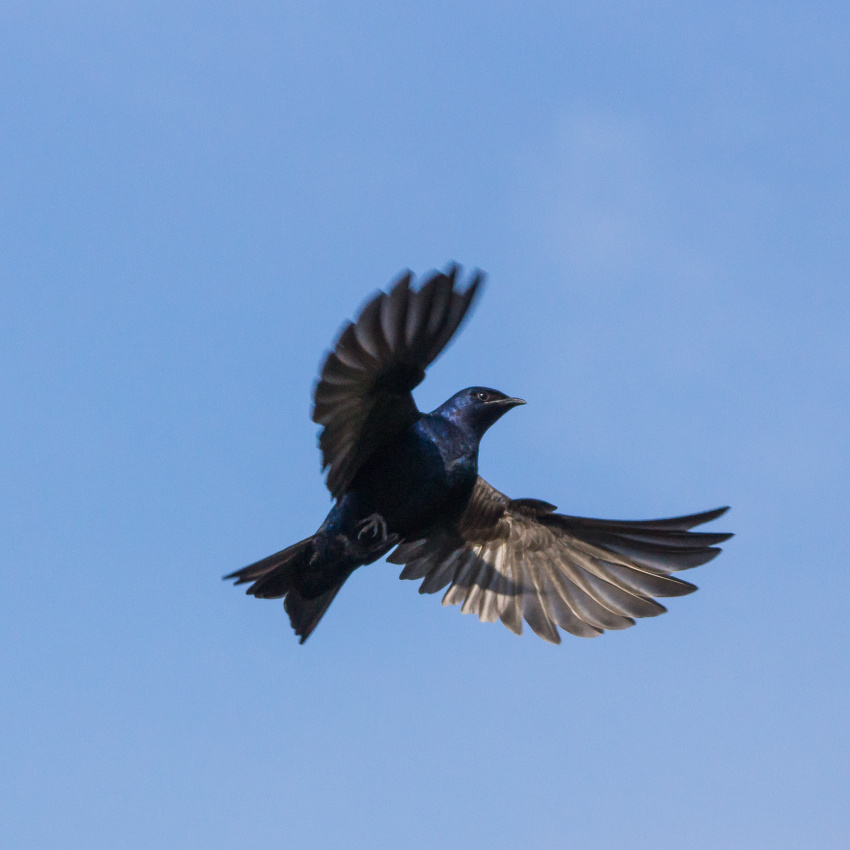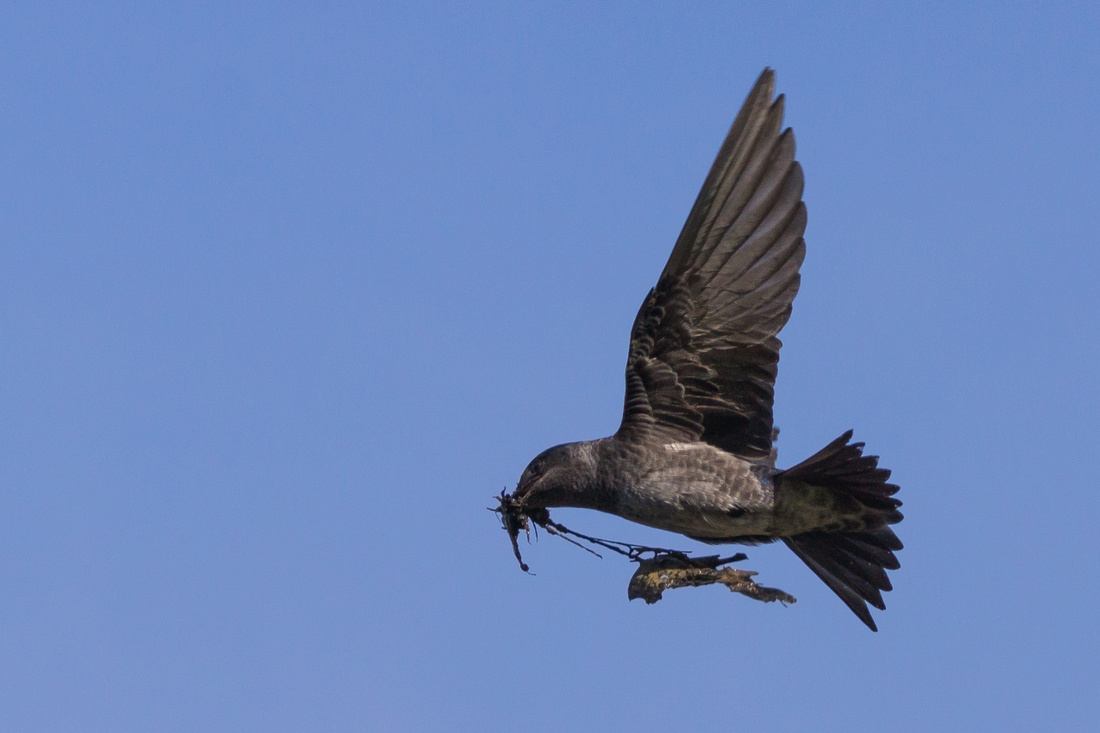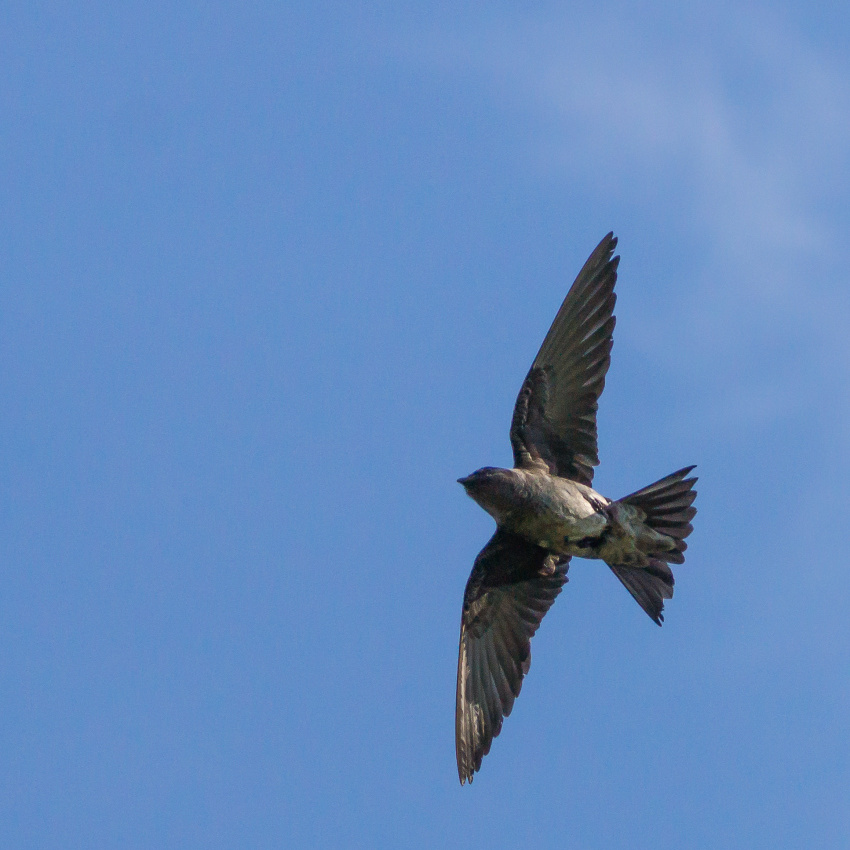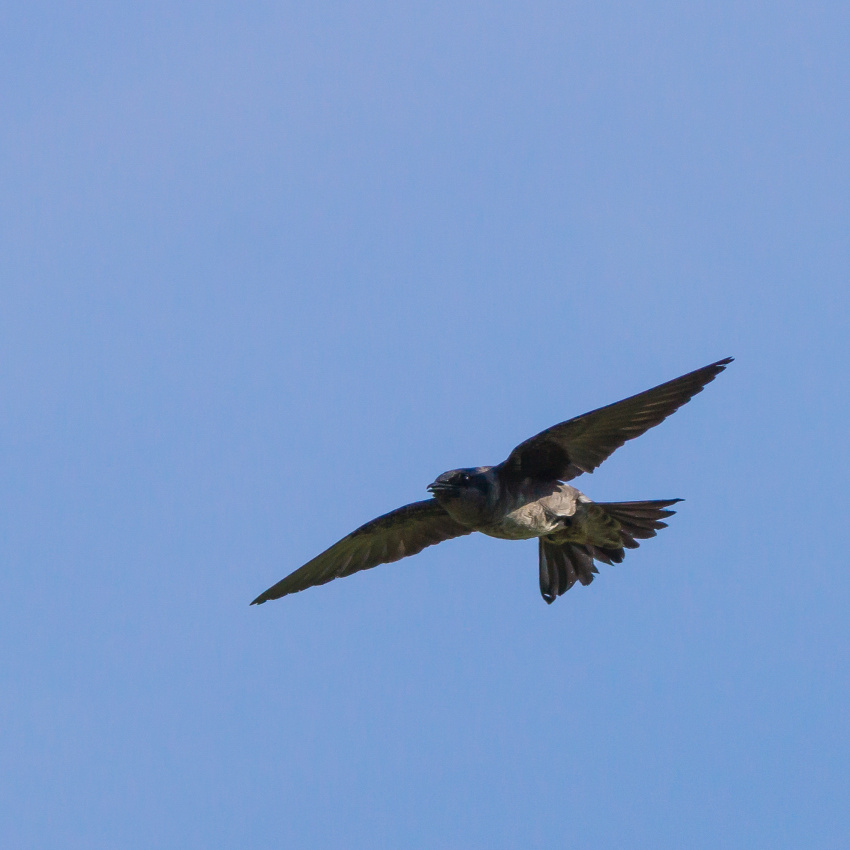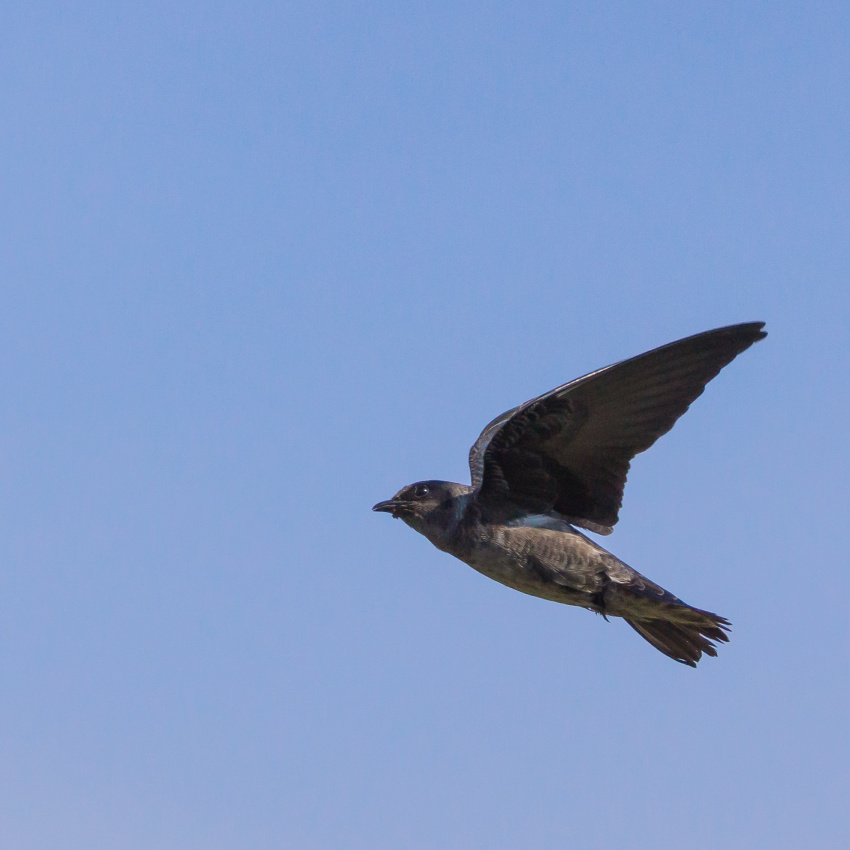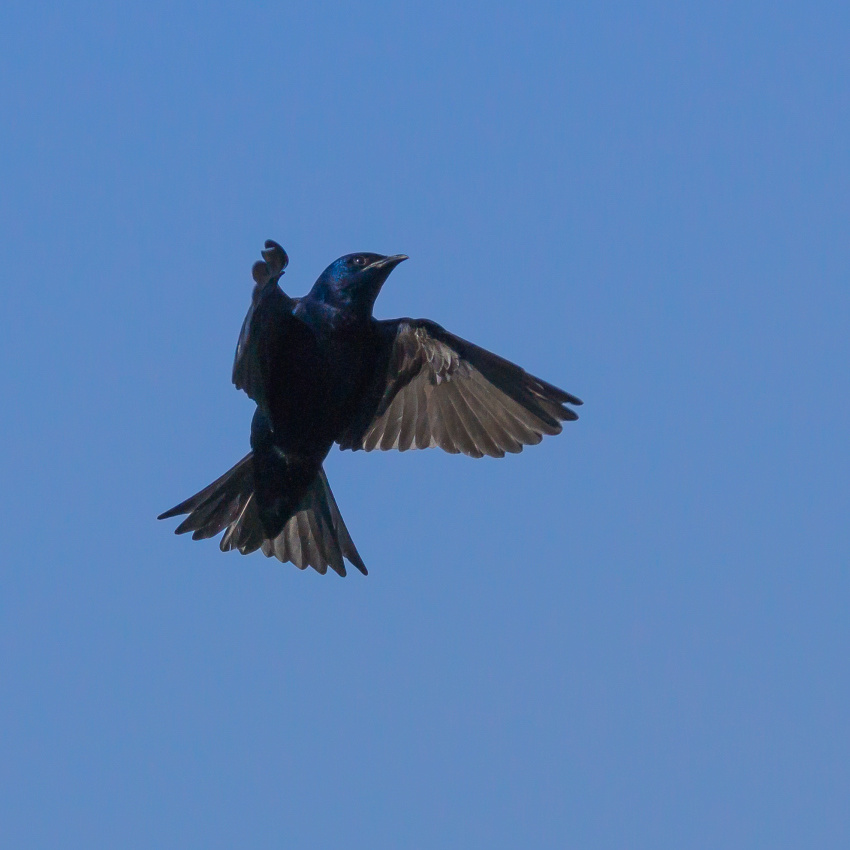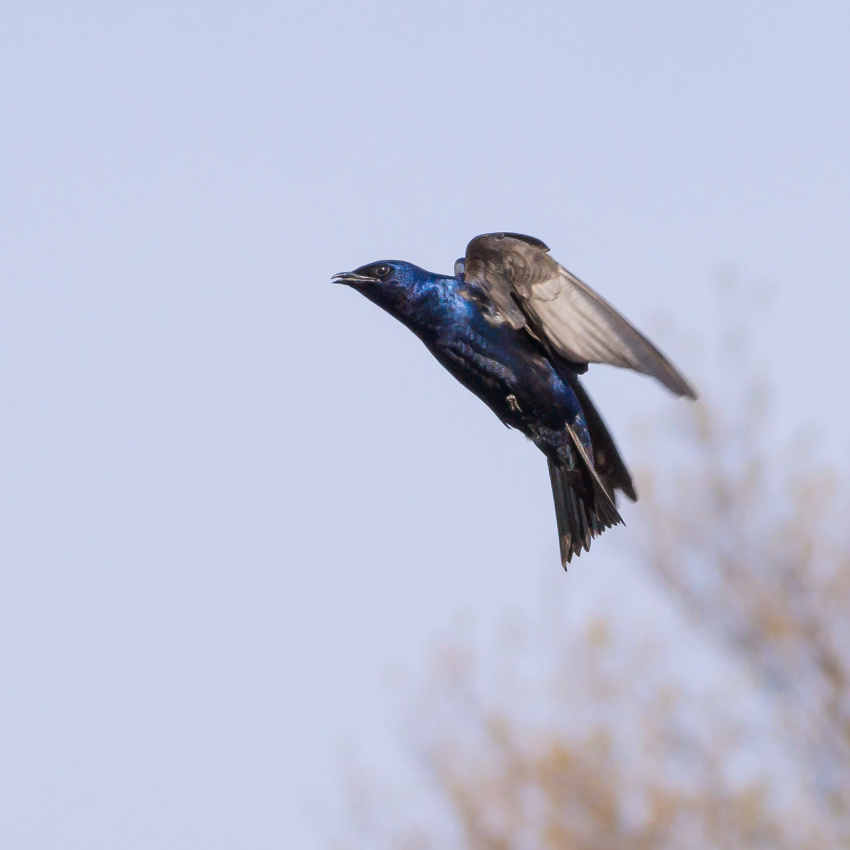Welcome to my blog pages. I will occasionally document some of my unusual wildlife photography experiences using this format. When relevant, I'll try to include field notes and other information that might prove interesting to readers.
Southern Dogface Butterfly – A Rare Sighting in Northern Virginia – April 14, 2022
One nice spring day when I was out with my camera I came across and photographed what I thought was a Clouded Sulphur butterfly. I was pleased to find it - one of the first butterflies I’d seen in 2022. After I returned home and edited my photos I posted the Clouded Sulphur on iNaturalist, a website that documents wildlife and foliage sightings worldwide. Other members verify observations and the data is available for researchers.
After I posted the observation, another iNaturalist member noted that my observation was a Southern Dogface – a butterfly very similar to a Clouded Sulphur but with a pattern on the upper side of its forewings that resembles a dogs face (see: https://en.wikipedia.org/wiki/Zerene_cesonia). The unusual thing about my sighting was that the Southern Dogface had never been sighted in Virginia and posted on iNaturalist. I checked other postings and sure enough, there were none in Virginia. The closest verified observation was 342 miles south – a little northeast of McBee, SC. Furthermore, my sighting did appear to be a Southern Dogface. The dog’s face was not very apparent but a pointed wingtip, another characteristic of the Southern Dogface (and different from the Clouded Sulphur), was obvious. Moreover, my observation looked identical to many other postings. I also checked The BugGuide and Butterflies and Moths of North America. There were none in Virginia on The BugGuide site and a five on Butterflies and Moths of North America but none with photos – the most recent being from 2014 south of Cape Charles in southern Virginia. Below is a map of the range of the Southern Dogface in North America and Mexico (source: iNaturalist). The teardrop shows the location of my verified sighting relative to all the others - clearly off the beaten path.
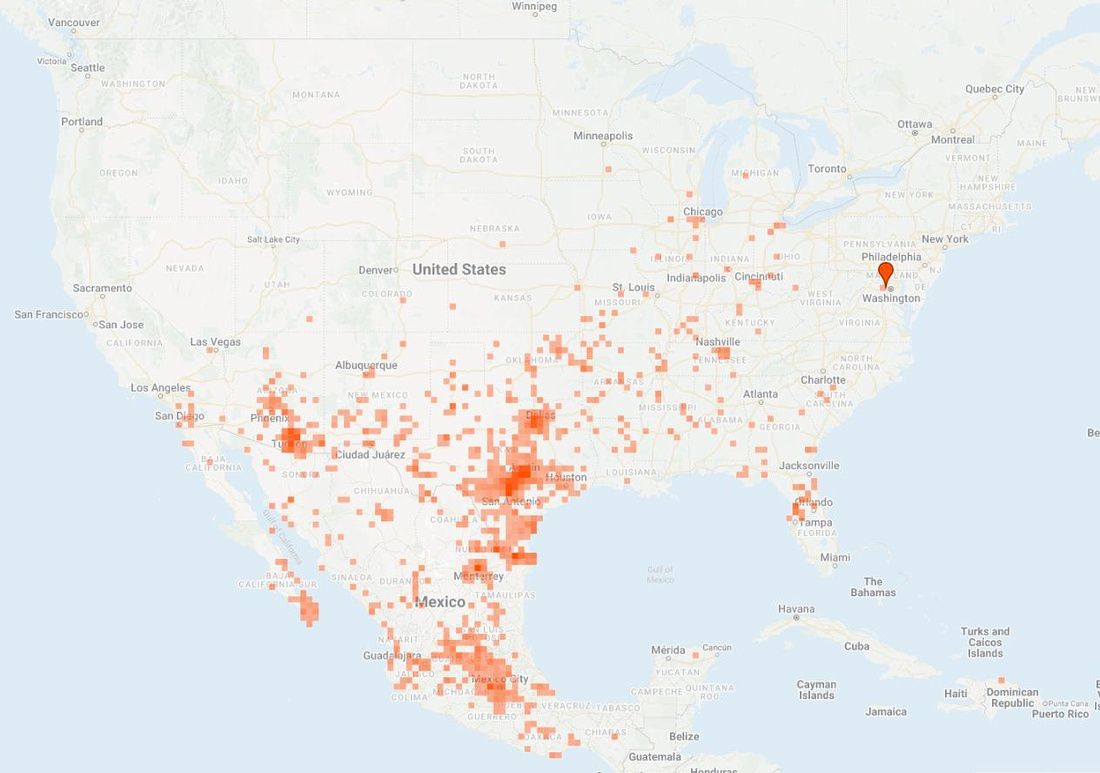 Southern Dogface butterfly range in the USA and Mexico. Teardrop locates my observation. Source: iNaturalist
Southern Dogface butterfly range in the USA and Mexico. Teardrop locates my observation. Source: iNaturalist
My three photos of the Southern Dogface
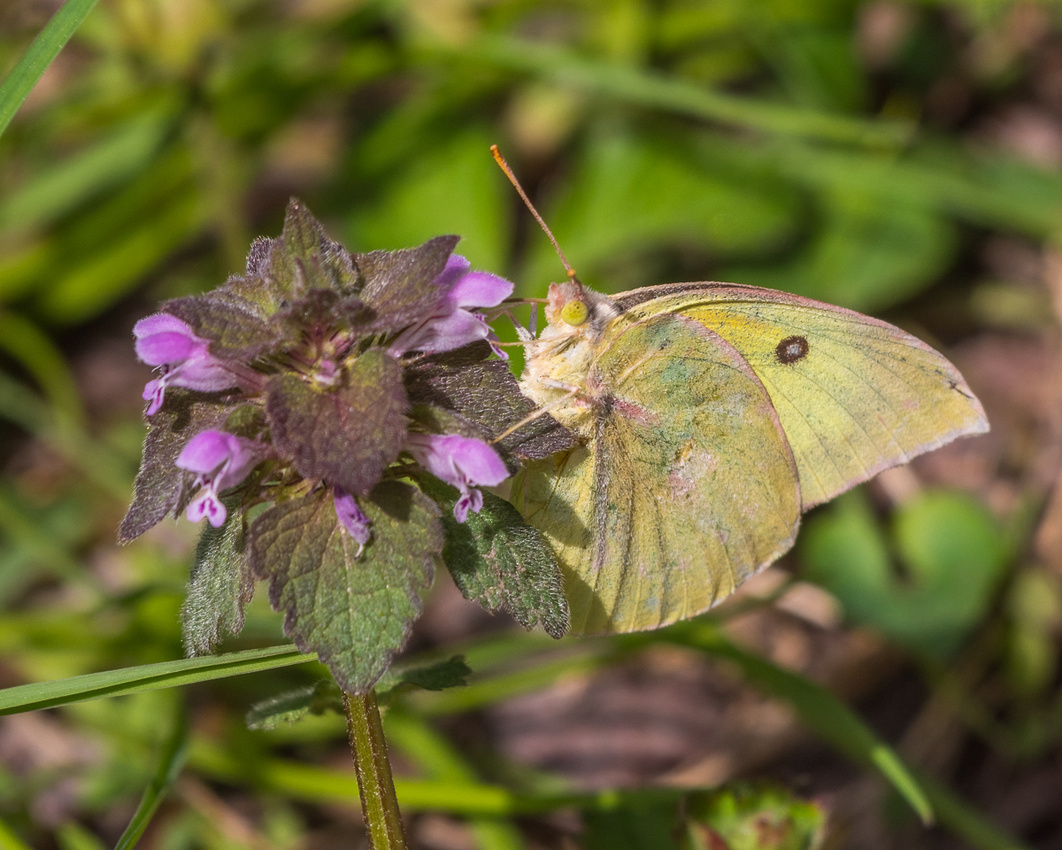



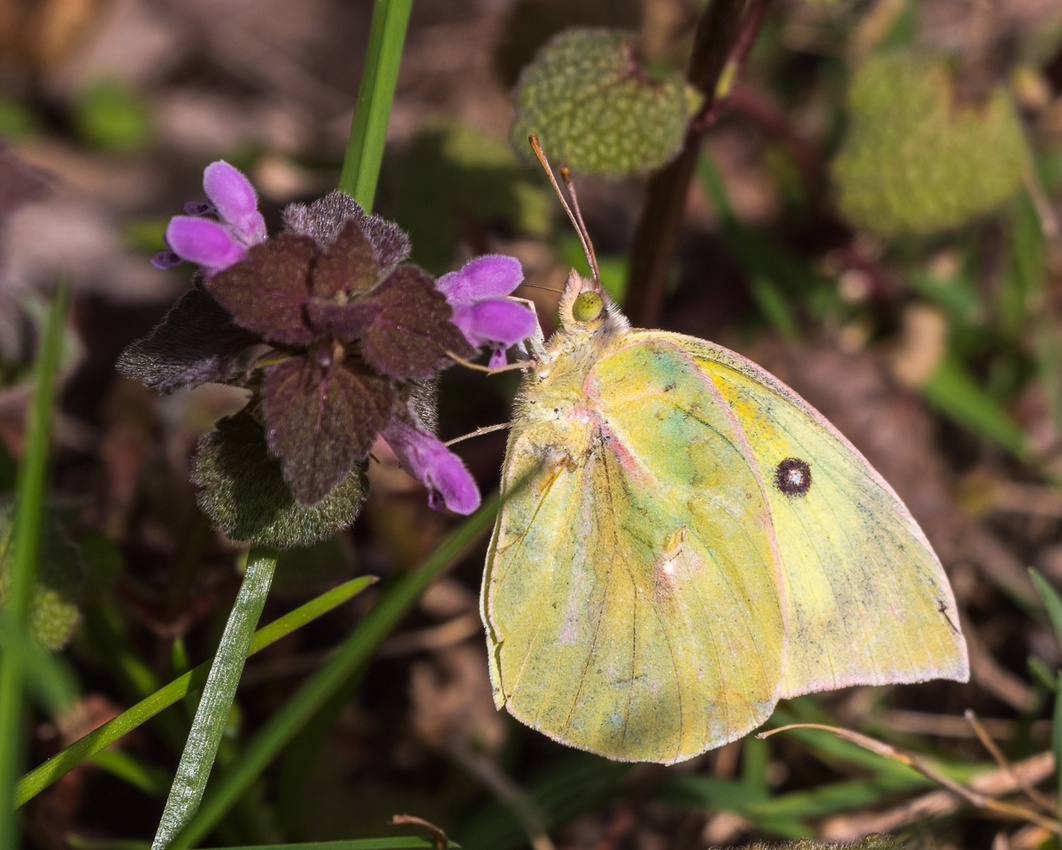

Reston's Piebald Deer: Spring 2017- September 26, 2018
There are always surprises when I'm out photographing wildlife, but rarely do I encounter anything like I did on July 30th, 2017. I was walking the bank of the stream running below and to the west of Terraset Elementary and South Lakes High Schools. I spotted something white in the heavy foliage. At first I thought it was a goat because it was almost completely white save a little brown around it's face and ears. As I got closer, I also found a fawn and it's mother with the white animal. Finally, I realized it was almost certainly the sibling of the normal fawn. My experience with wildlife told me to simply stand quietly and observe and take a few photos as the opportunity presented itself. Eventually the three deer simply went about their business without paying much attention to me. I followed them around snapping many photos while the three of them occasionally looked up to be certain I wasn't getting too close. The mother seemed particularly at ease. Maybe she recognized me from previous encounters. I followed the three around for at least an hour. They eventually circled south of Terraset, wandered up behind the South Lakes high school ball fields and crossed Ridge Heights Road. I could tell the piebald had some deformities, especially when he crossed Ridge Heights Road. One of his rear legs was a bit clubbed and his back had a very distinct curvature. His gait was also different than his sibling's and he was significantly smaller. Just west of Ridge Heights pool, the piebald finally got tired and laid down in the woods. I took several more photos of the three of them and finally headed home with about 300 photos total.
Searching the web, I found a lot of information on piebald deer. They are caused by a recessive gene in both parents and indeed are pretty unusual - estimates of only one to two percent of the white-tailed deer population. Unlike albinos which are completely white with pink eyes, pink nose, and pink tints around their hooves, the piebald deer have brown eyes, brown or black nose and black hooves, with varying amounts of brown and white fur. Most piebalds have more brown markings than the one I had photographed. Over the next few weeks, I was able to find the piebald about half of the time when out photographing wildlife. He was always within a pretty limited range in south Reston. Over the course of fifteen months, I never saw him west of the fifth fairway on Reston's south golf course, south of the Snakeden Branch (running into Lake Audubon), east of Ridge Heights pool or north of Purple Beach Drive. The map below depicts his range which has a perimeter of about two miles and an area less than two tenths of a square mile.
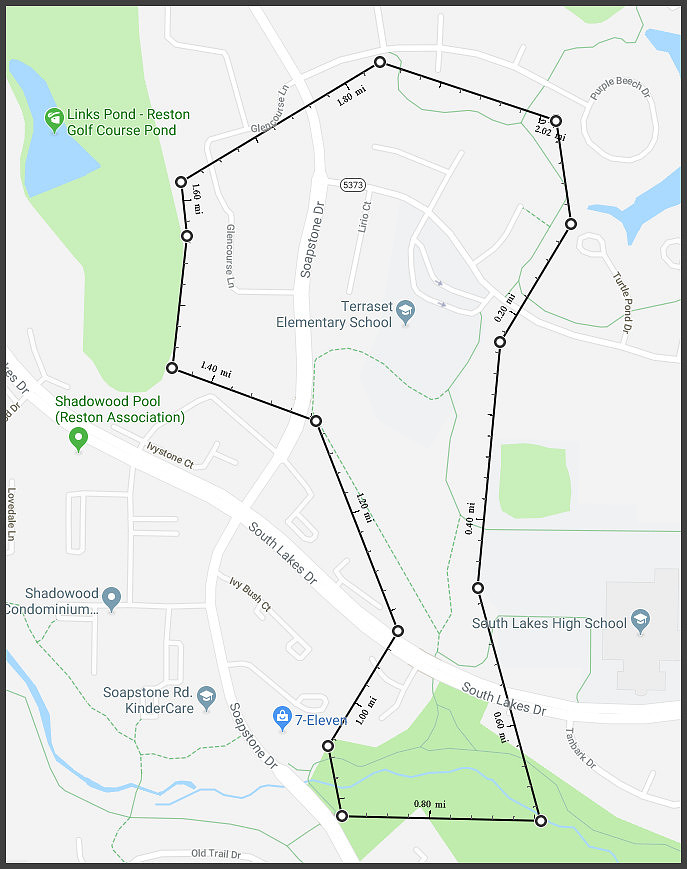

Over the course of 15 months, I took thousands of photos of him. I retained and edited only the better ones and have posted about 200 on my photo web site - https://aehass.zenfolio.com/p228859108. He was always smaller than his sibling and never grew to normal size. In the winter his white coat got very thick, but in the spring it thinned out about the same time he sprouted antlers. His mother has a very distinctive notch in her right ear and is so used to seeing me, I can walk up and nearly touch her. She is the most tame wild animal I've ever seen. She had two more fawns this past June - the piebald's little sisters and/or brothers.
As the spring of 2018 drew on, I started seeing the piebald alone more and more. His mom would sometimes be in the general area, but often nowhere nearby. He was clearly striking out on his own. He would wander with other deer, but seemed to have a hard time keeping with the herd. He liked to stop, lay down and rest more often than other deer. He was usually bringing up the rear. Once, two leash-less large dogs spotted a group of deer including the piebald and took off in chase. The piebald bolted with the others, jumped the Snakeden Branch and headed back in the direction of South Lakes Drive and Terraset. I knew he had deformities and was slower than other deer. I worried he would injure himself. Somehow he escaped. During the summer of 2018, I continued to find him two or three times a week. He always seemed pleased to see me and didn't mind my following him to take photos. Every time I went out with my camera, I looked for him - I was clearly obsessed.
On September 16, 2018, a posting on Nextdoor noted that the piebald was injured and using only three legs. Due to heavy rain the next day I couldn't get out to look for him. On September 18th I found him just south of Purple Beach Drive in the woods. His right rear leg had a compound fracture at the knee. It looked bad and I didn't see how he could survive. Later in the day, I called Fairfax County Animal Protection Police and reported his location and condition. They responded immediately, but couldn't locate him and gave up. I found him again on September 20th near Ridge Heights pool resting quietly. Since he didn't seem distressed, I didn't report him again. Following discussions on Nextdoor with the many Reston residents that knew him, I decide to let nature take its course. Maybe he could overcome his injury. In the meantime, I read many reports of deer surviving broken legs. His injury was a pretty clean fracture - no obvious bruises or cuts around the break. To me, it didn't appear to be the result of being hit by a car. I'm guessing it was broken while traversing the sometimes steep and rocky terrain in Reston - maybe bolting when startled.
I didn't get out again until a short break in the rainy weather on September 24th. I found him in a Glencourse cluster backyard standing on three legs in the light mist. He didn't look good, was muddy, but was upright. I took a few photos and left since he was still able to move around. The next day, I found him covered with mud laying next to the woods in the small open area just south of Glencourse Cluster. The ground was totally saturated and very muddy due to four straight days of rain. But he was awake, moving his head and nursing his injury. Again, I snapped a couple of photos and left. I thought that maybe if the rain stopped, he might still find a way to survive.
On Wednesday, September 26th, I went out in the morning and found him in the same spot as the day before still covered with mud. He was breathing and an ear would wiggle a little, but when I talked to him repeatedly, he never opened his eyes. I could tell the end was near. When I returned home three hours later, I called Animal Protection and reported the situation. They responded immediately and found the piebald lifeless. He apparently passed on just before they arrived.
Many residents of South Reston enjoyed seeing this little fellow for over 15 months while he roamed his small heavily wooded range. In addition to being an unusual occurrence in nature he was truly an adopted resident. We will all miss him dearly. Rest in peace piebald.
Below are a few of my favorite photos of our wonderful piebald.
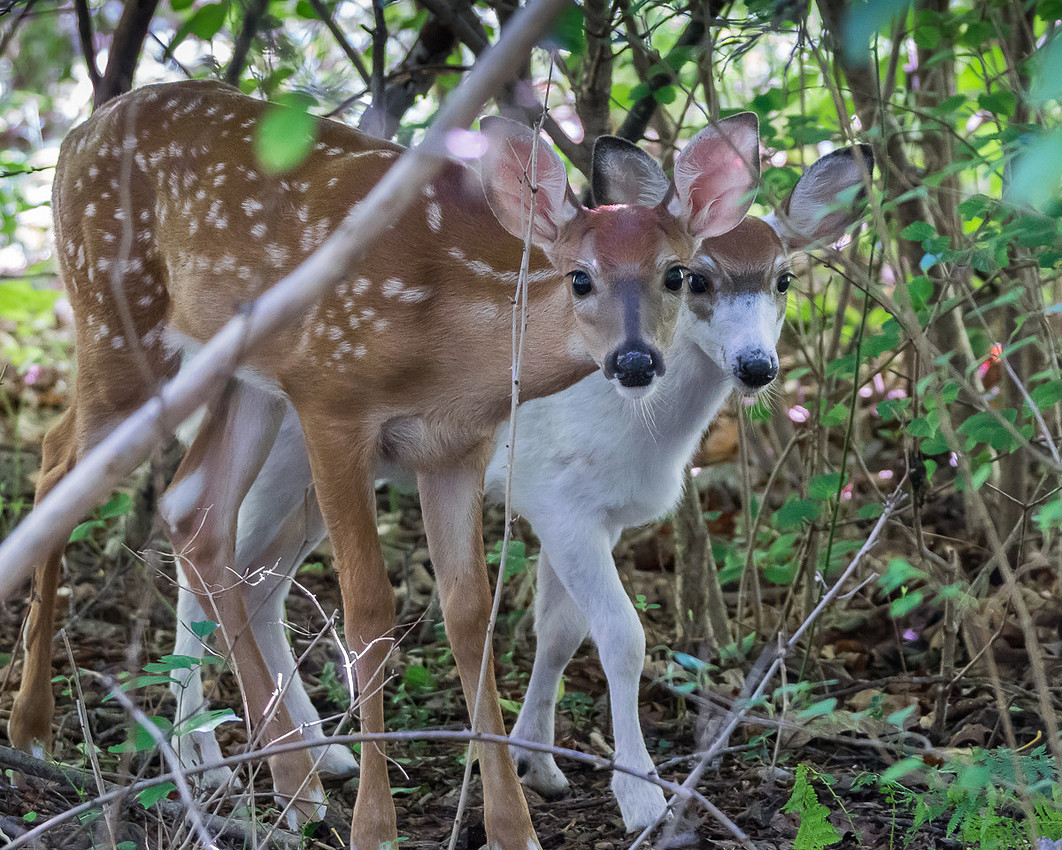

Piebald and sibling - July 2017
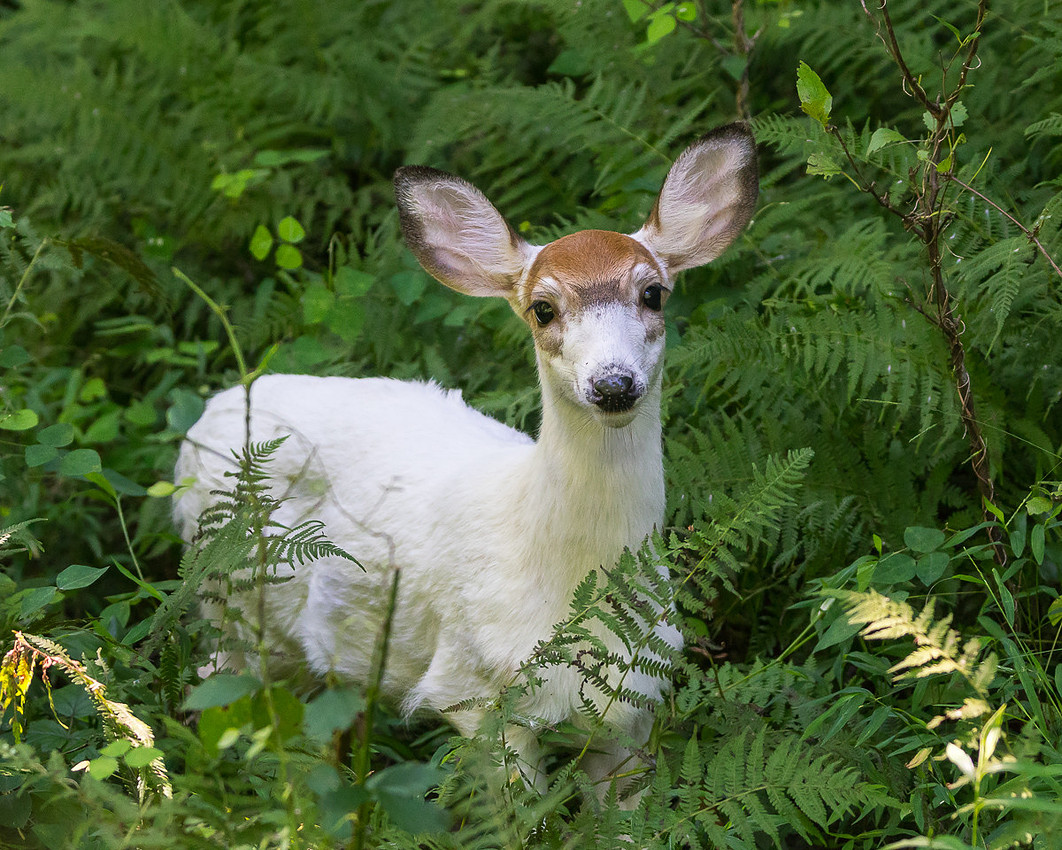

Piebald in the ferns - July 2017
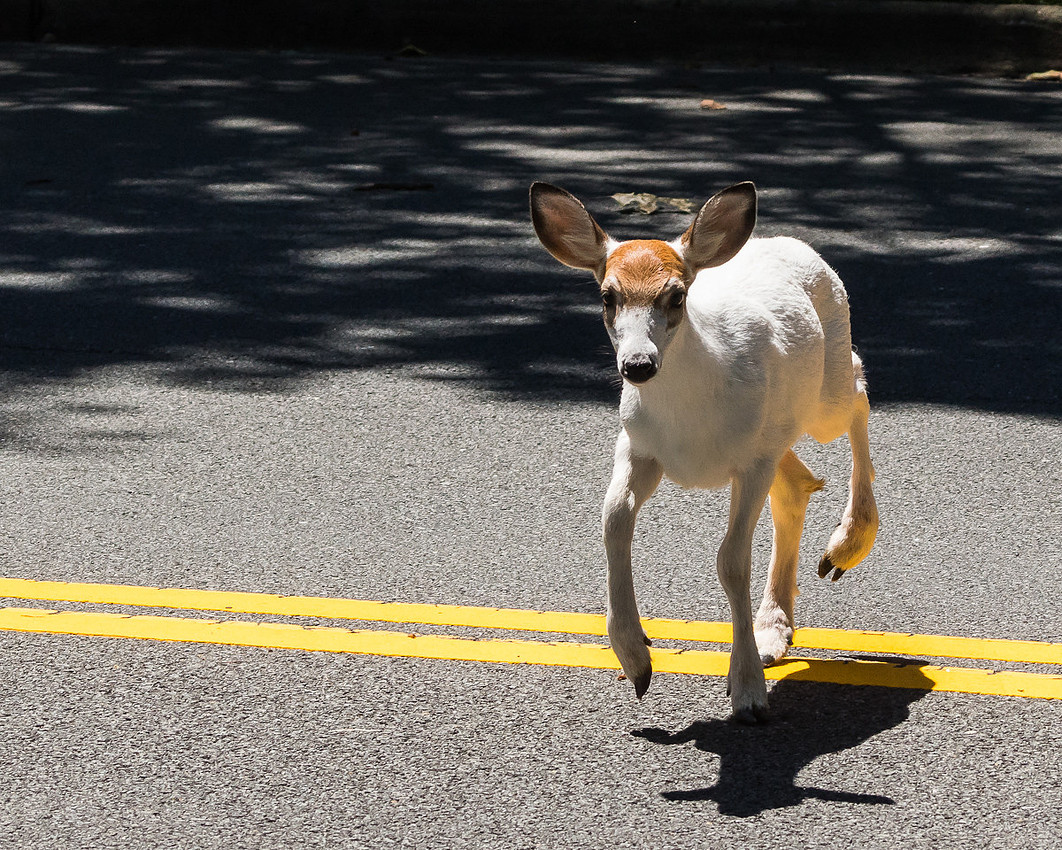

Crossing Ridge Heights Road - July 2017
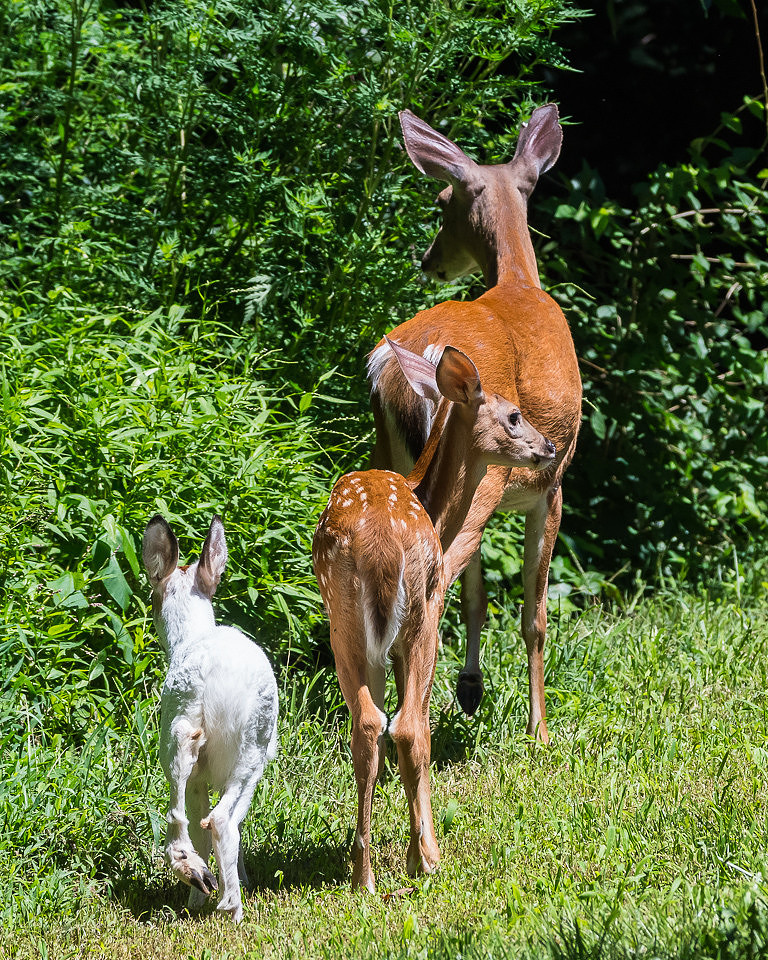

Following sibling and mom - July 2017


With sibling - August 2017
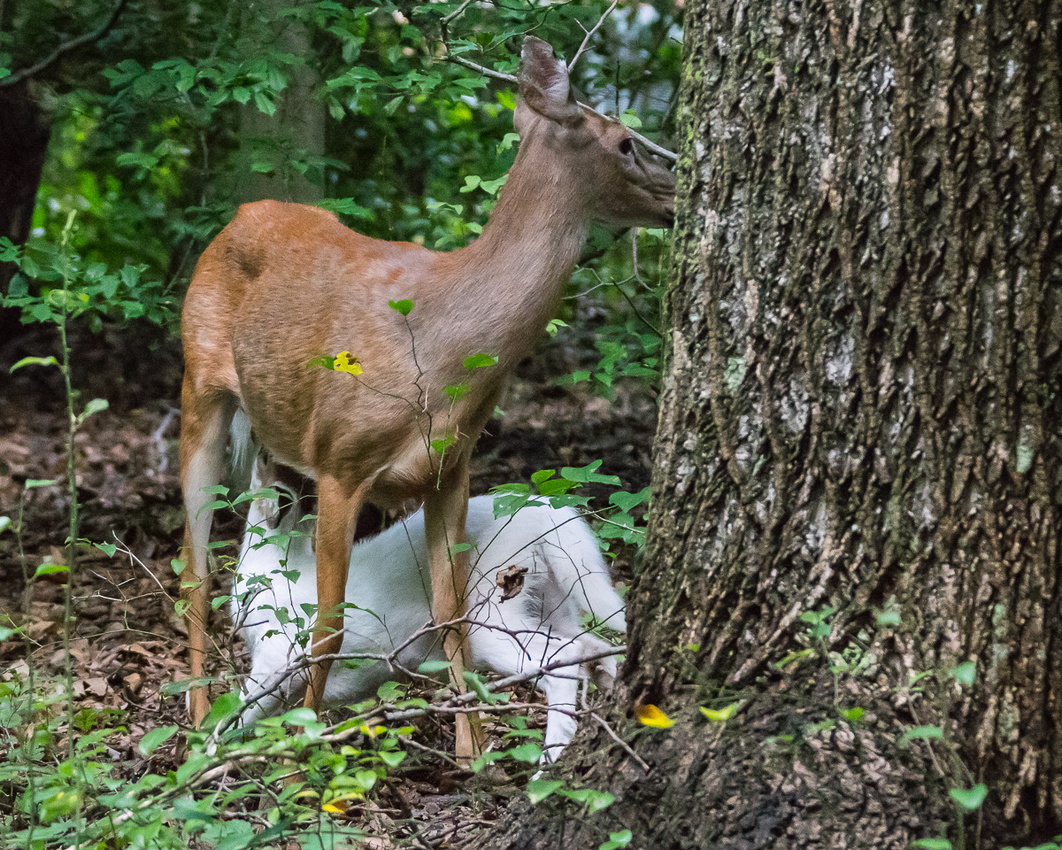

Nursing with mom - September 2017
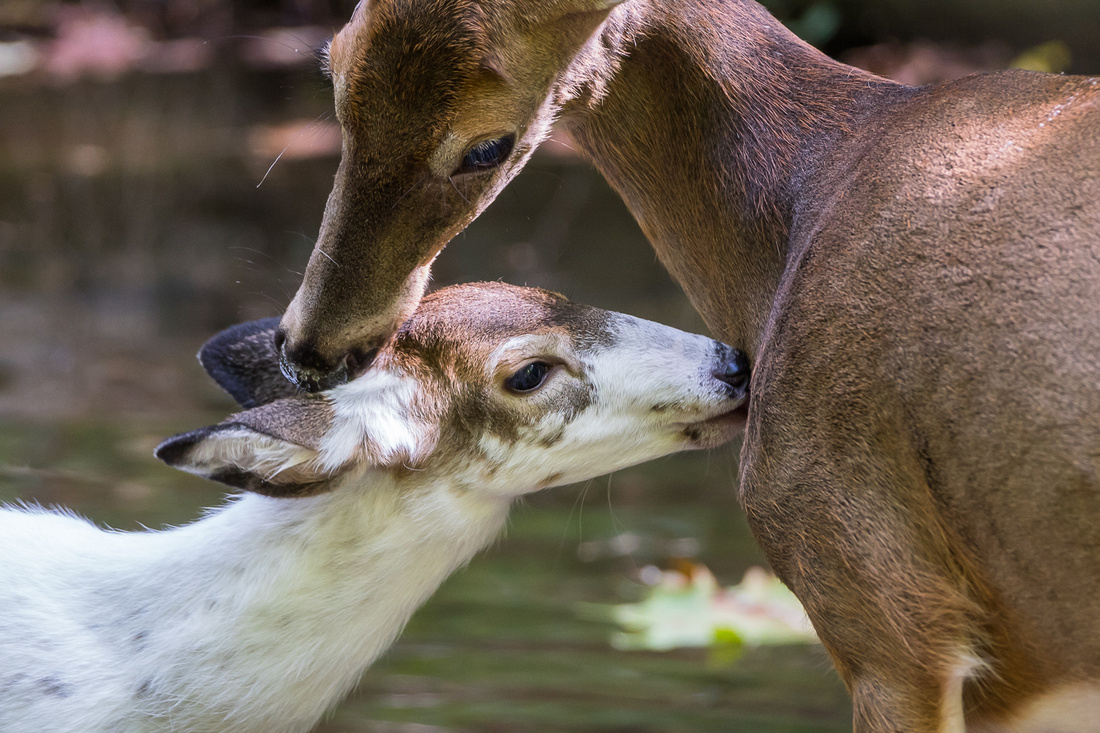

Affection from mom - September 2017
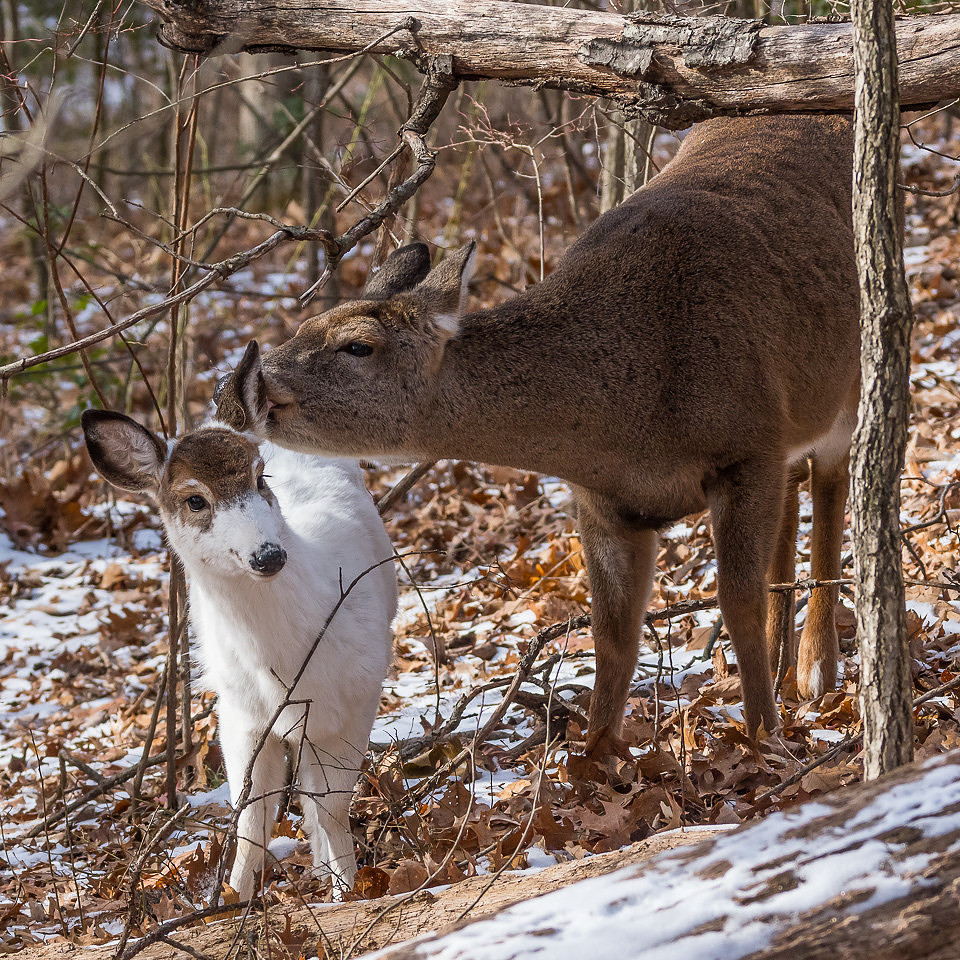

A nibble from mom - January 2018
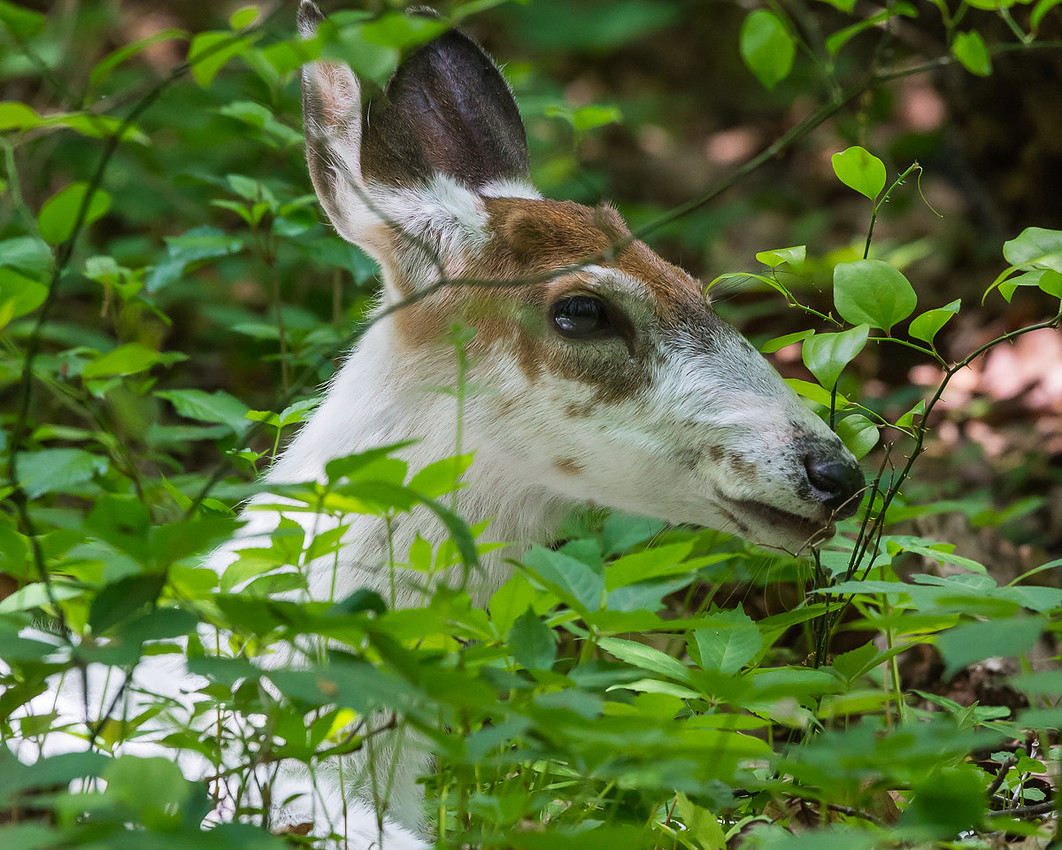

Budding antlers - May 2018
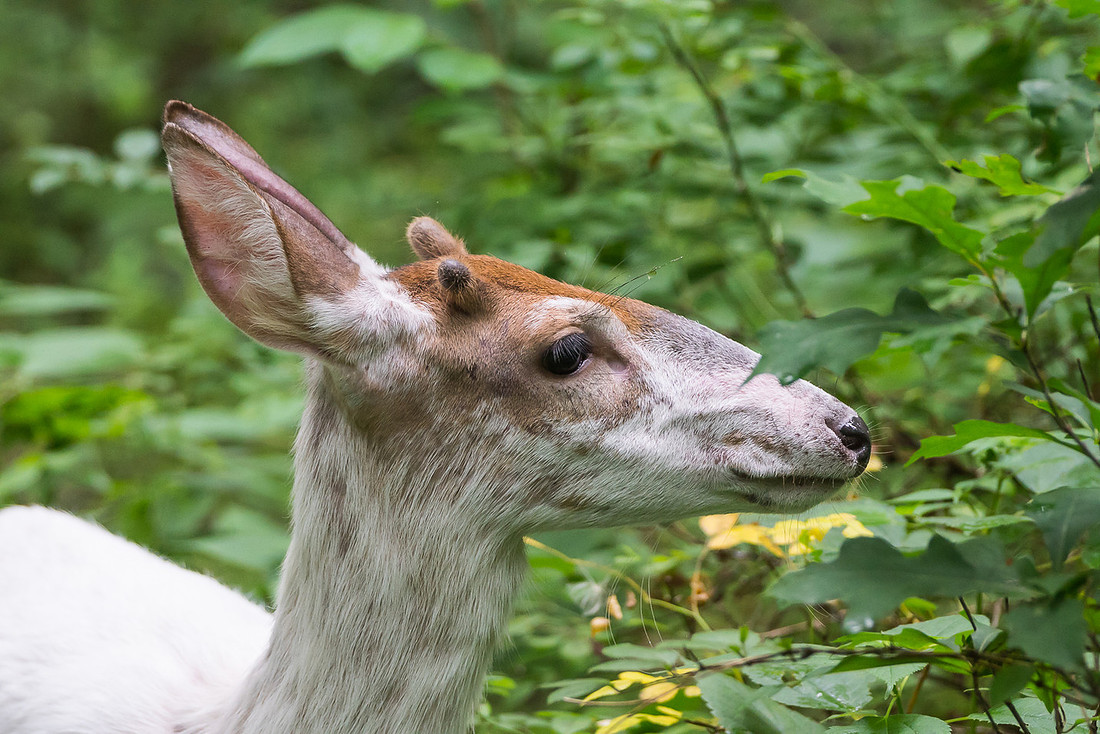

Color changes - July 2018


Stretching - September 2018


Sporting his antlers - September 2018
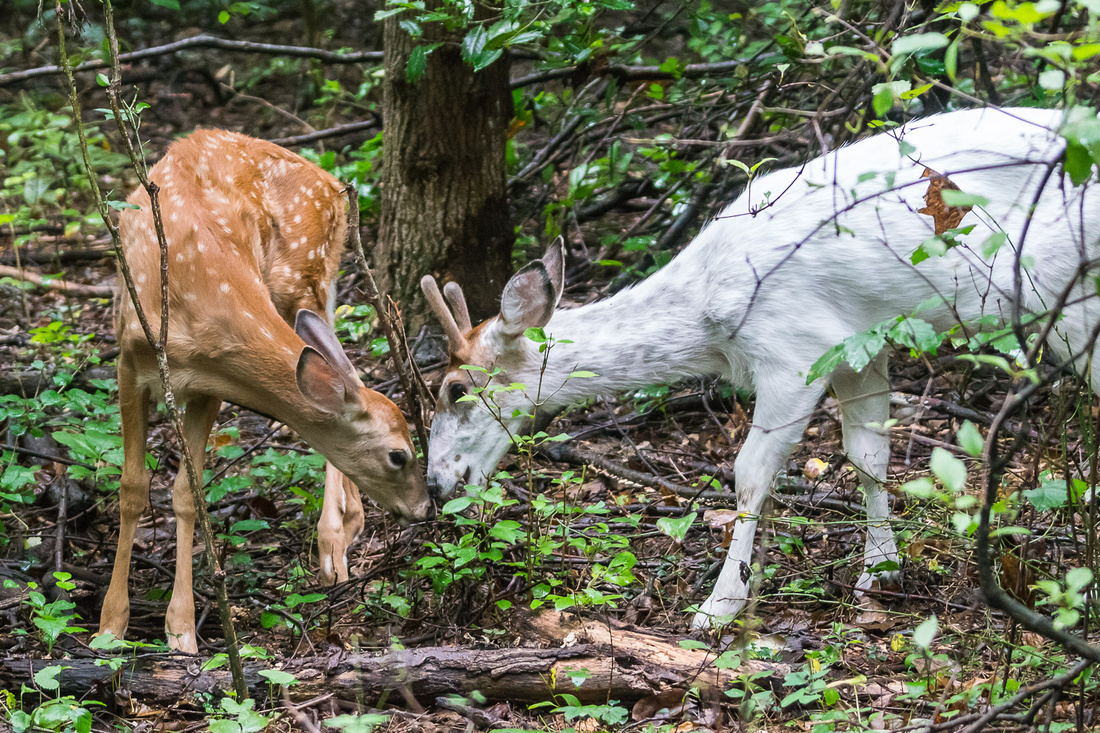

With baby brother/sister - September 2018
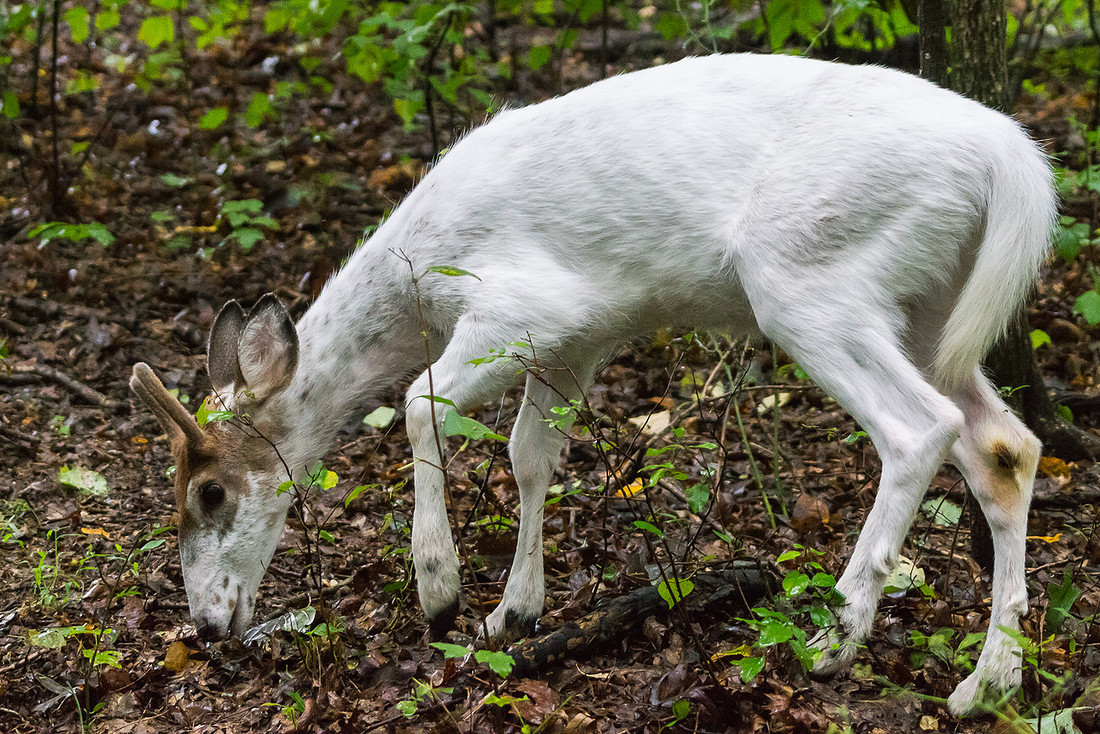

Last photo before injury - September 11, 2018
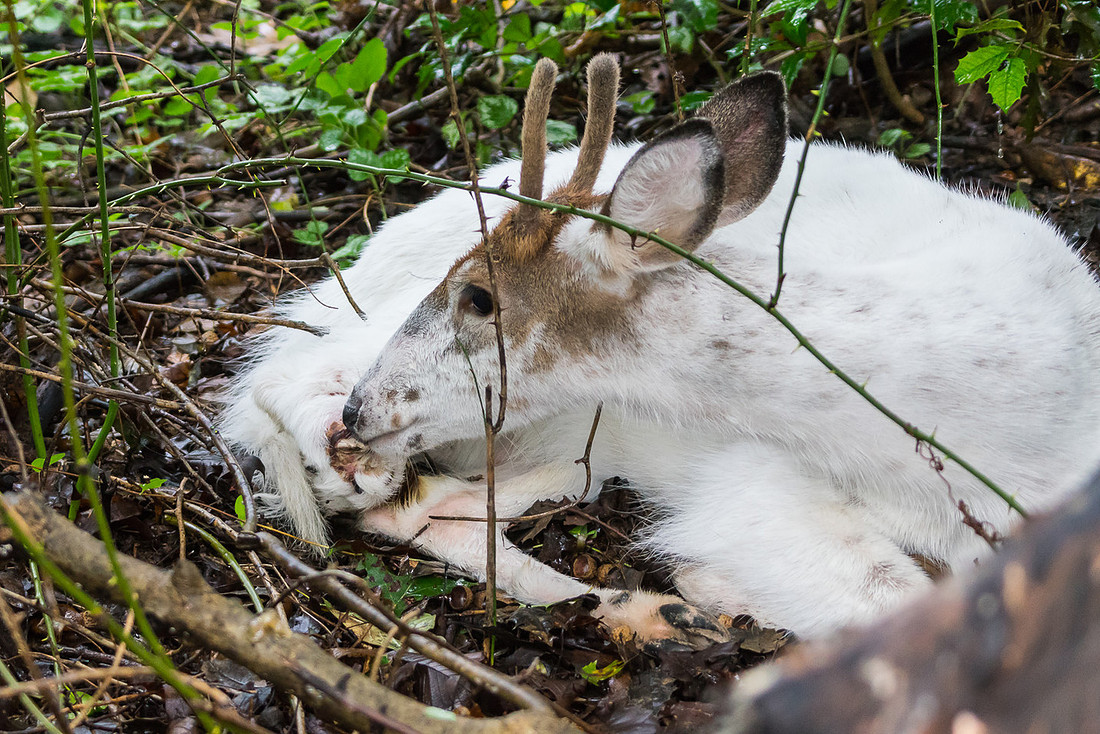

Nursing his injury - September 18, 2018
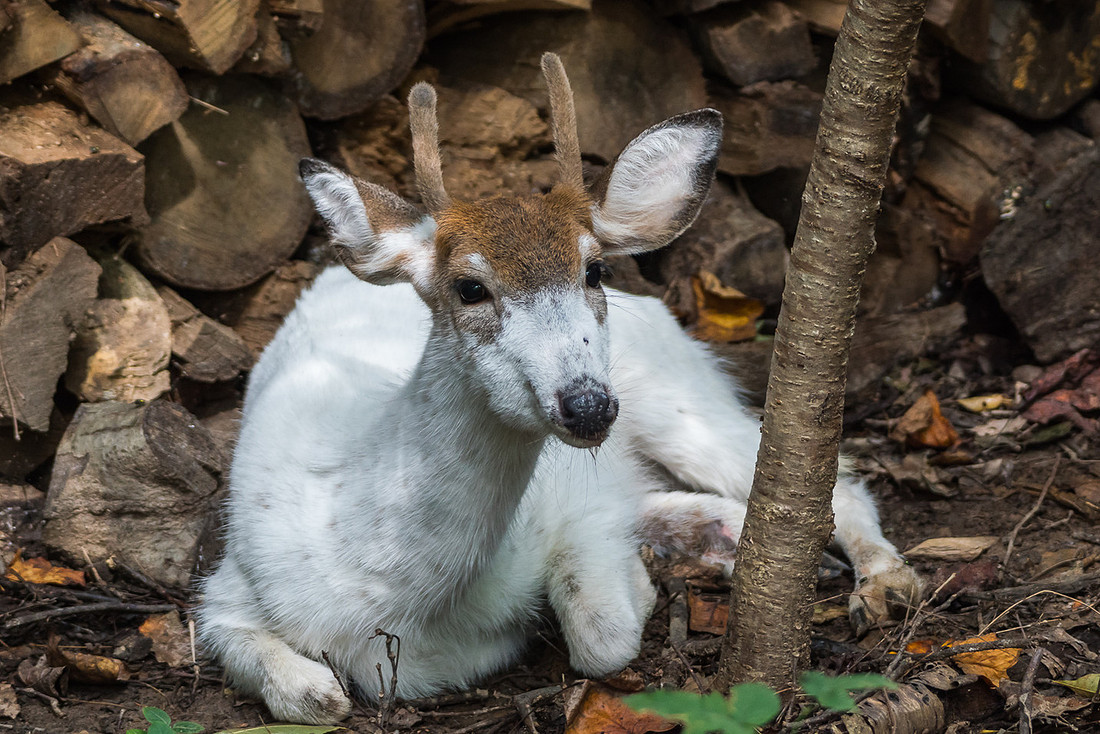

Resting near Ridge Heights pool - September 20, 2018
Barred Owl - Winter 2016-2017
In late December 2016 a friend alerted me to an owl behind his house in a holly tree stand near Terraset Elementary School. I walked by there the following two days, but did not find him. On Christmas day, I made a last minute decision to swing by for another look on my way around my usual golf course loop. He was sitting overlooking an open space facing the school. There was a deep ravine and dry creek between us. I managed to snag a few usable shots before I lost him in the holly trees. He's a Barred Owl - like any owl species, pretty unusual around Reston. This was the 101st bird species I've photographed in Reston over the last nine years. Below is the best shot I managed on Christmas day - merry Christmas to me!
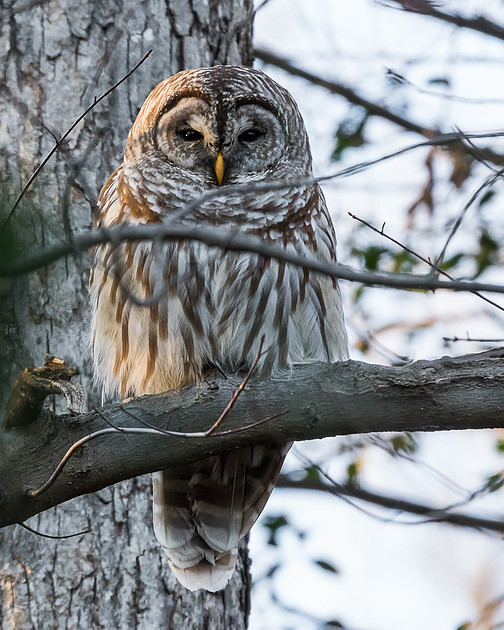

Christmas Day 2016
______________________________________________________________________________________________________________________
Over the next three weeks I walked by the school most days, but never saw him. I had almost given up assuming he had moved on. Then on January 15th, 2017, I found him again in the same location - on the west side of Terraset school. This time I followed him as he moved from tree to tree. Each time he moved, I was able to locate him and take a few photos. He always perched about twenty feet above the ground and was usually well hidden behind branches and holly foliage. After I took a few photos, he would fly to another location, but always within about 30 yards.
This owl must be fairly young. Adult Barreds are usually about 20 inches tall, but I estimated him to be only about 15 inches. The Wikipedia page on the Barred Owl is interesting reading:
https://en.wikipedia.org/wiki/Barred_owl
Below are several photos taken at various locations in the holly stand on January 15th.


Perch 1 - Barred Owl reasonably uncluttered
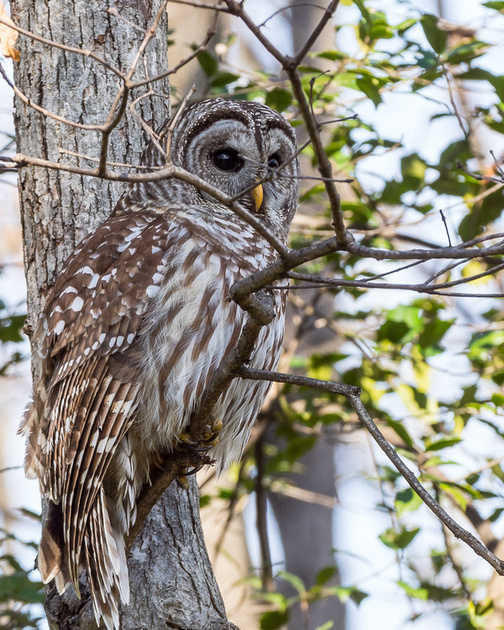

Perch 1 - Looking to the right


Perch 1 - behind branches


Perch 1 - in the sunlight
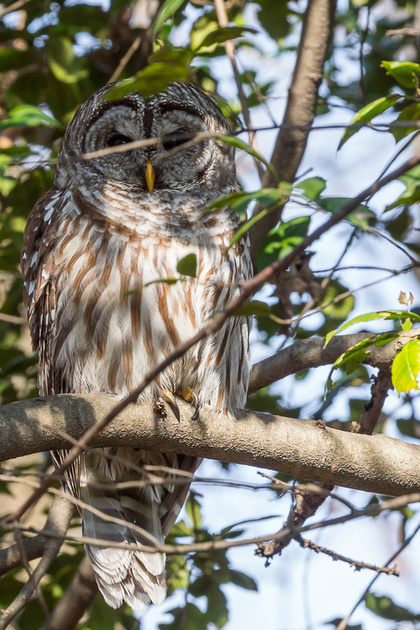

Perch 2 - eyes covered
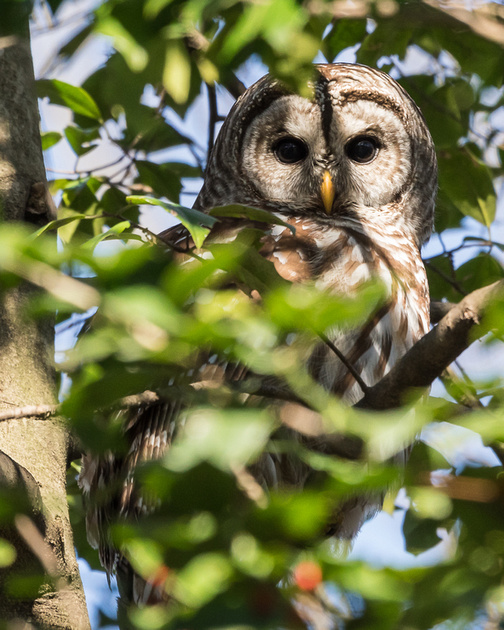

Perch 3 - behind holly leaves
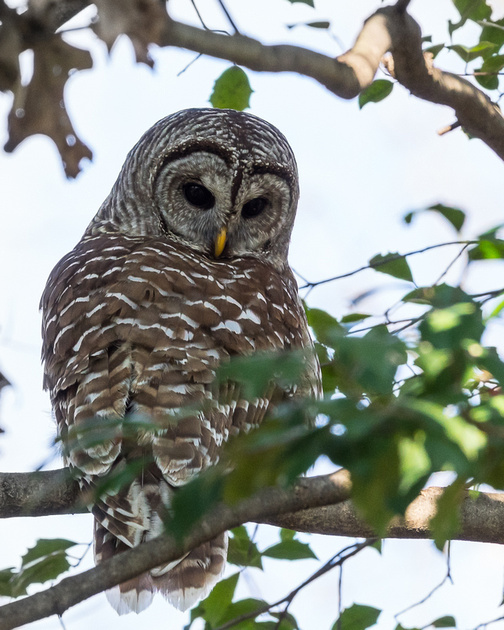

Perch 4 - looking down
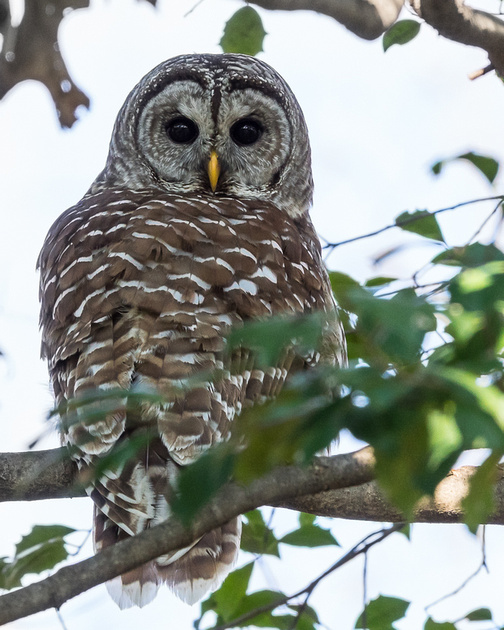

Perch 4 - a nice look
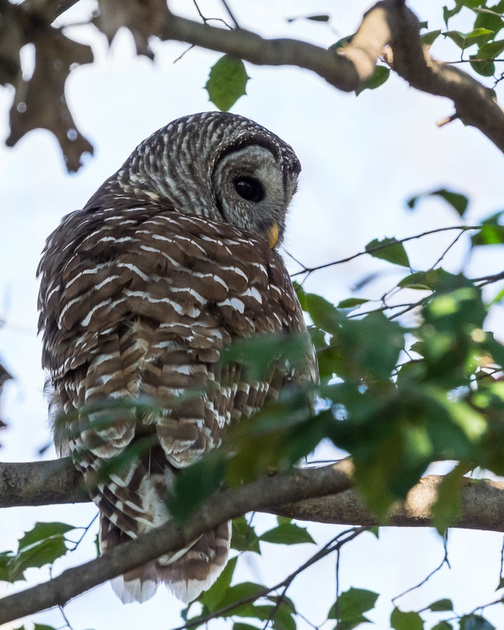

Perch 4 - looking right


Perch 5 - backlit
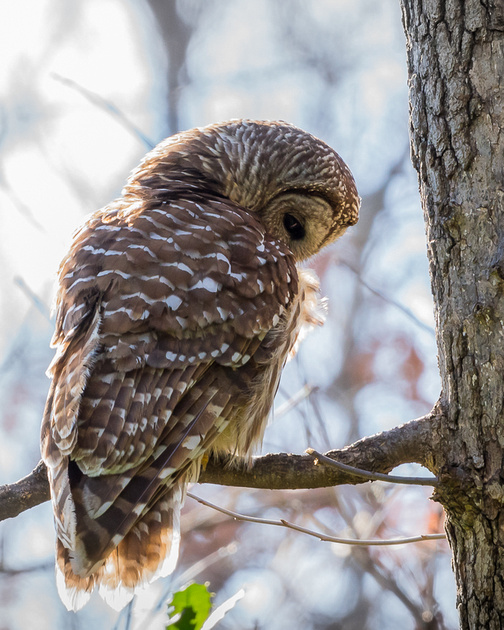

Perch 5 - sideways
Red Fox Kits - 2015
While out in early May, I was checking out a frequently used fox den near my usual walking route. It's in the deep woods about 30 yards behind a row of townhouses and has four or five entrances over an area of about 15 square yards. I walked up to investigate the main entrance and came within a foot of stepping on a sleeping kit. The kit blended in perfectly with the reddish brown leaf cover left over from the fall/winter.
I quietly moved away and sat down on a fallen tree trunk less than 20 feet from the den entrance. The kit eventually awoke and went in the den offering no good shots. I decided to wait a while just to see what might happen. Within five minutes, the tinniest kit I've ever seen emerged from the den. He was wobbly and seemed very unused to the daylight. He saw me, gave me a close look, but clearly didn't have any idea that I might be a danger. Soon, four more kits emerged from the den. Again, they all spotted me (remember, I'm 20 feet away), but didn't seem alarmed. I'm pretty sure they had never seen a human before.
Over the course of the next 15 minutes, I continued to take photos (about 200) while the kits wandered around the den entrance. They would occasionally get spooked by my slight movement, but quickly realize that I wasn't an immediate threat. They were also pretty inquisitive. One actually came up to me and sniffed the toe of my boot. After a couple of seconds, he scampered back toward the den.
The area around the den is heavily wooded with oak trees, oak saplings, many briar vines and the usual forest undergrowth. The den is several years old - maybe decades. I have kit photos at the den from as early as 2008 when I first started shooting wildlife. The light is generally pretty awful for photographing. There are a few places where the sunlight periodically peeks through, but by and large, it's very low light - even with no leaves on the trees. By May, new growth is rapidly appearing and shooting conditions deteriorate daily. So, I am just about always using high ISO (1600-3200), shooting with a wide open lens (f4 - f5.6) and using slow shutter speeds (1/60th - 1/125th). White balance (I use auto and adjust in post processing as best I can) is also tricky with the new green foliage overhead, the occasional sunbeam shining through, changing light and the deep shadows.
As kits grow older, they quickly become increasingly aware of their surroundings and get easily spooked by any movement. Over the course of the month of May and early June, they became harder and harder to photograph. Generally, when they spotted me, they would dart back into the den. I photographed mostly from three locations behind large trees, I would often wait for 30 minutes or an hour near a den entrance before any of the kits would appear.
The parents were always out hunting for food. Clearly, feeding five kits is a full time job. They catch anything they can, but the kit diet is mainly Eastern Chipmunks and Eastern Gray Squirrels. I have even seen a kit eating a Red-shoulder Hawk. I have no idea how it was caught.
By early June, the size differences of the kits seemed to increase. The largest was possibly twice as big as the smallest. In past years, there is always one kit that seems to be the most aggressive, but I've never seen size differences like this 2015 litter. Throughout most of May, I rarely saw the parents. I can't believe they didn't know I was visiting the den almost every day. They must have seen me a time or two. In late May while I was at the den, one of the parents walked up with a chipmunk for the kits. When I was spotted, the parent immediately walked away stopping a time or two to make sure I was following. I was led about a hundred yards from the den out into the open (on the edge of a golf course). The parent lay down under a small bush and just sat there for ten minutes while I sat in the open taking photographs. I was only 20 feet away. This was clearly a very trusting Red Fox.
Below are several of my better photos of the kits and parents. All the photos are hand held or with the lens braced against a tree. I used a Sony A-77 camera and a Sony 70-400mm G2 f4-f5.6 lens. The full set of edited photos covering May 4th through June 17 is here:
http://aehass.zenfolio.com/p269233010


Junior emerges from the den May 4th
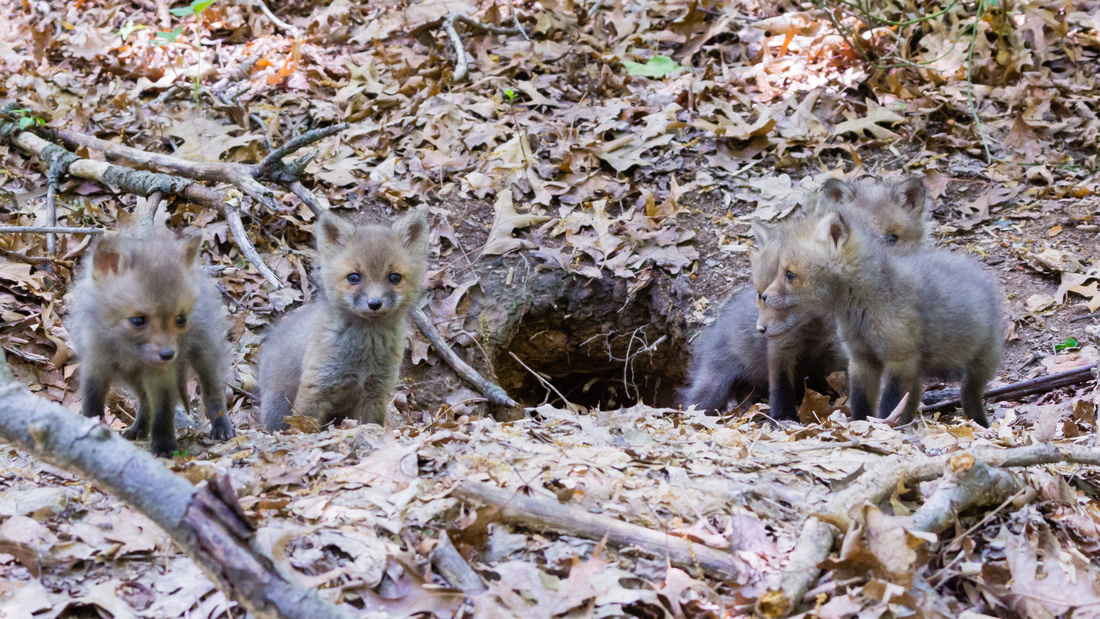

All five kits


A nice clean pose


At the front door


In the sunlight


Resting in the leaves


Sound asleep
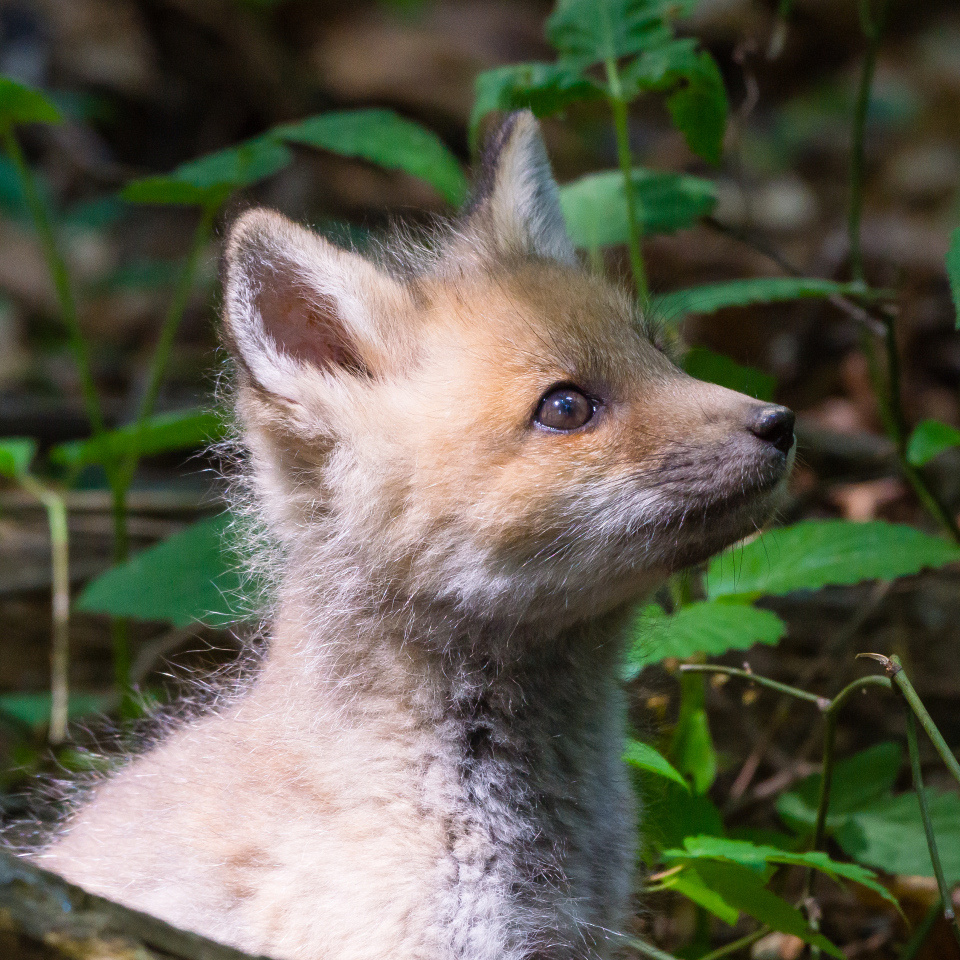

Having spotted a bird
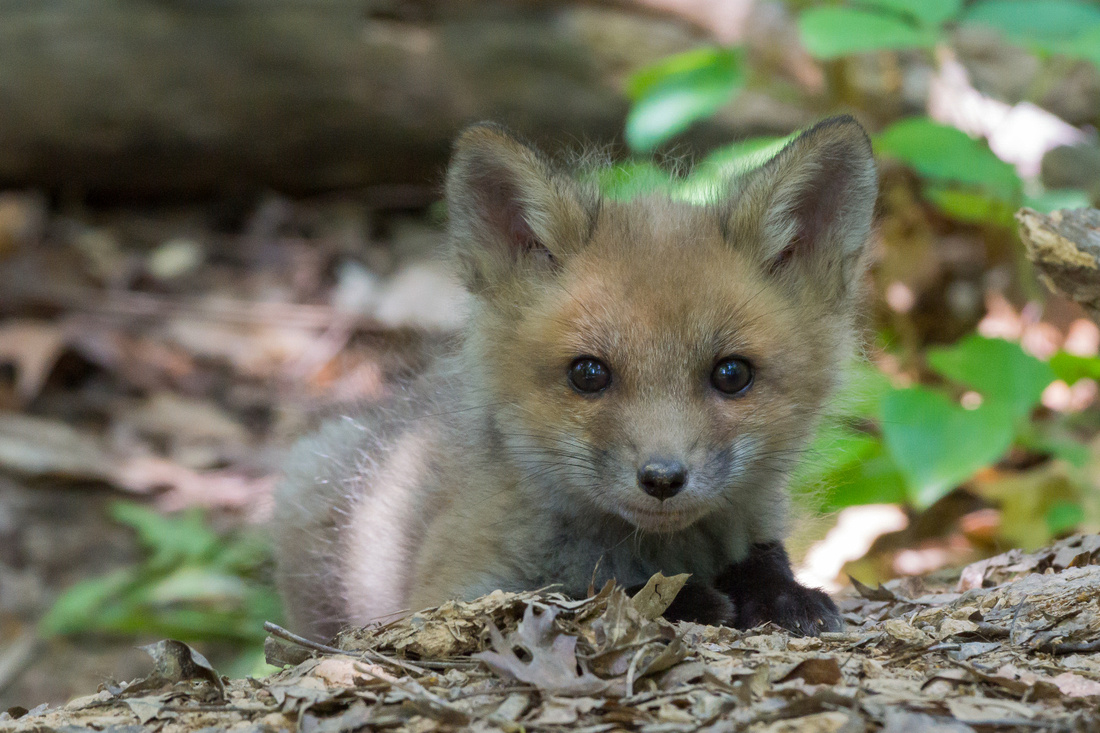

Black paws
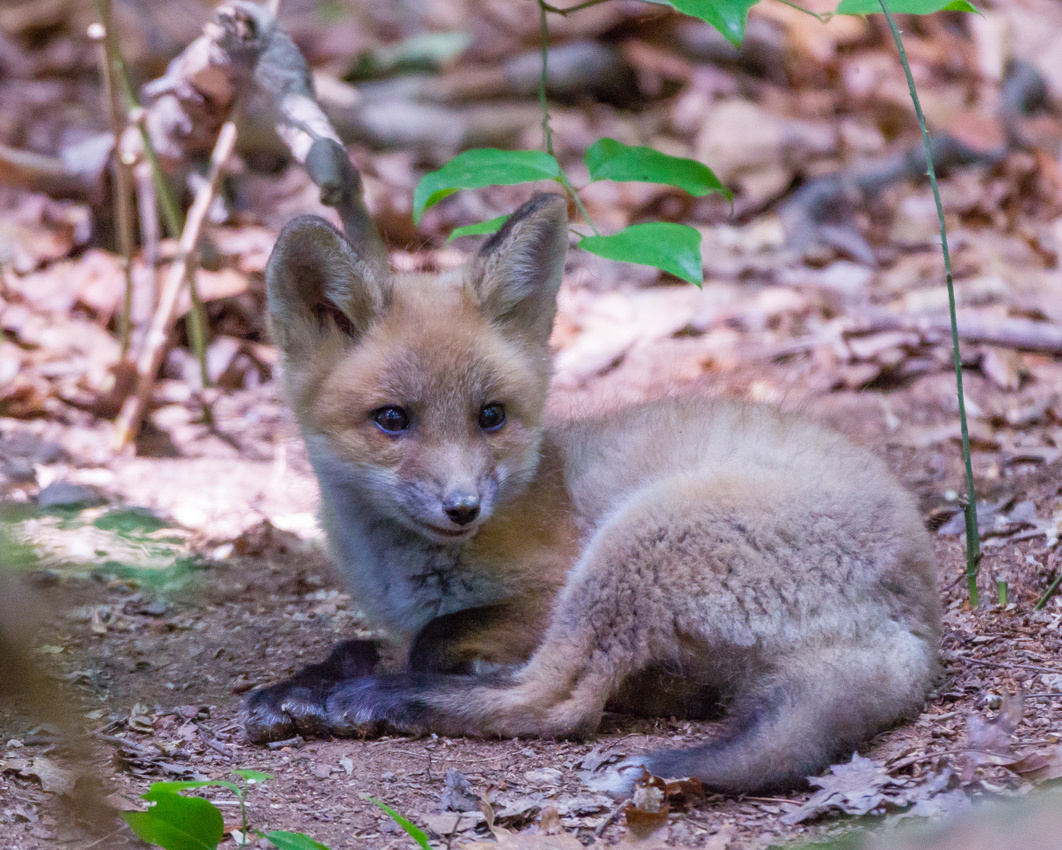

Big ears
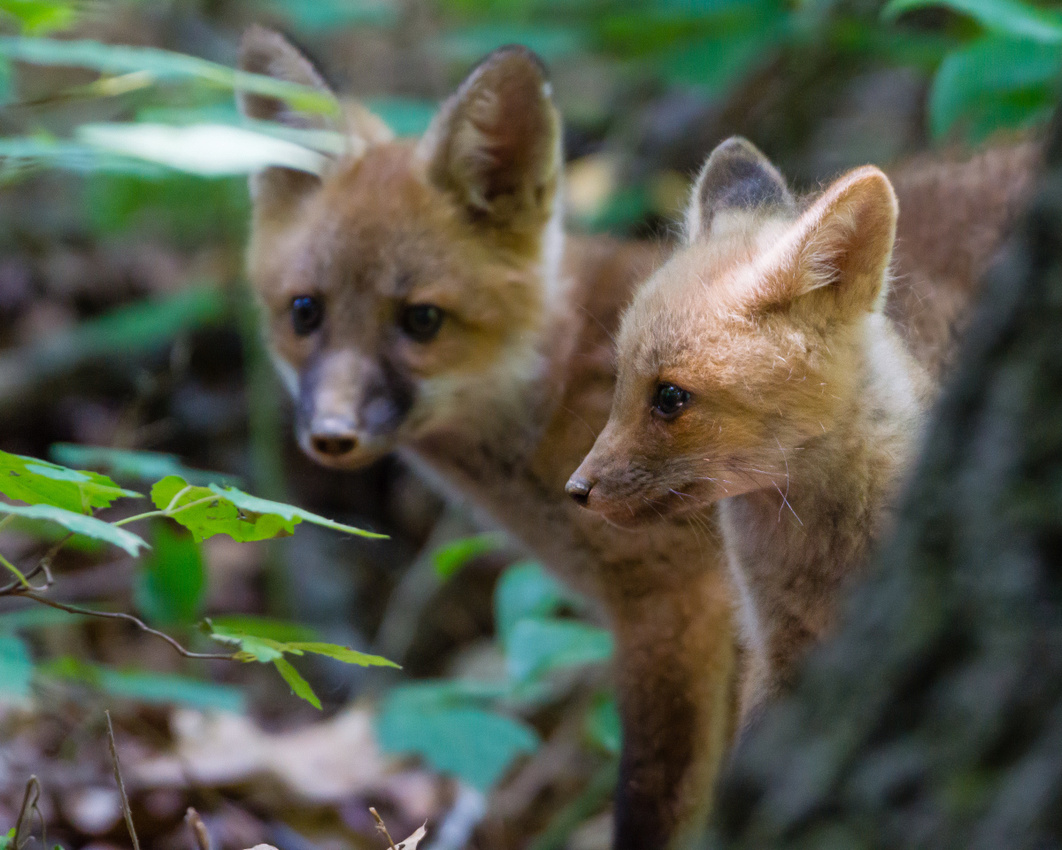

Size difference
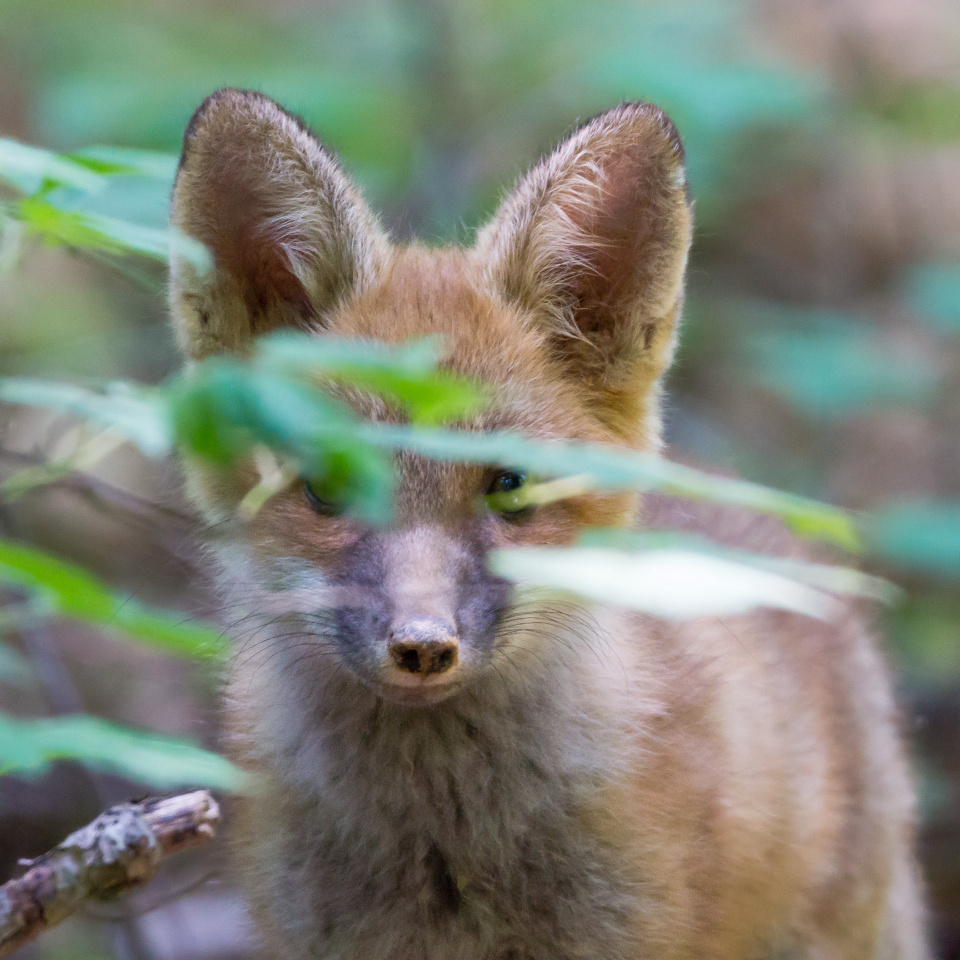

Typical tactic
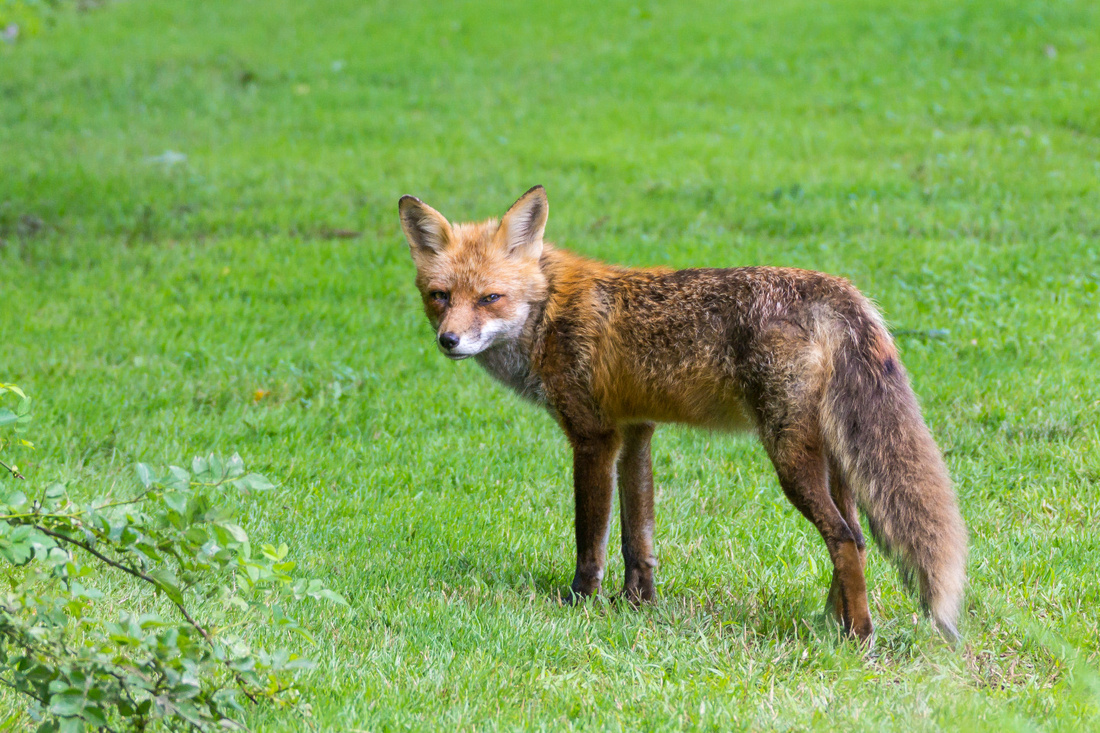

Dad lures me away from the den
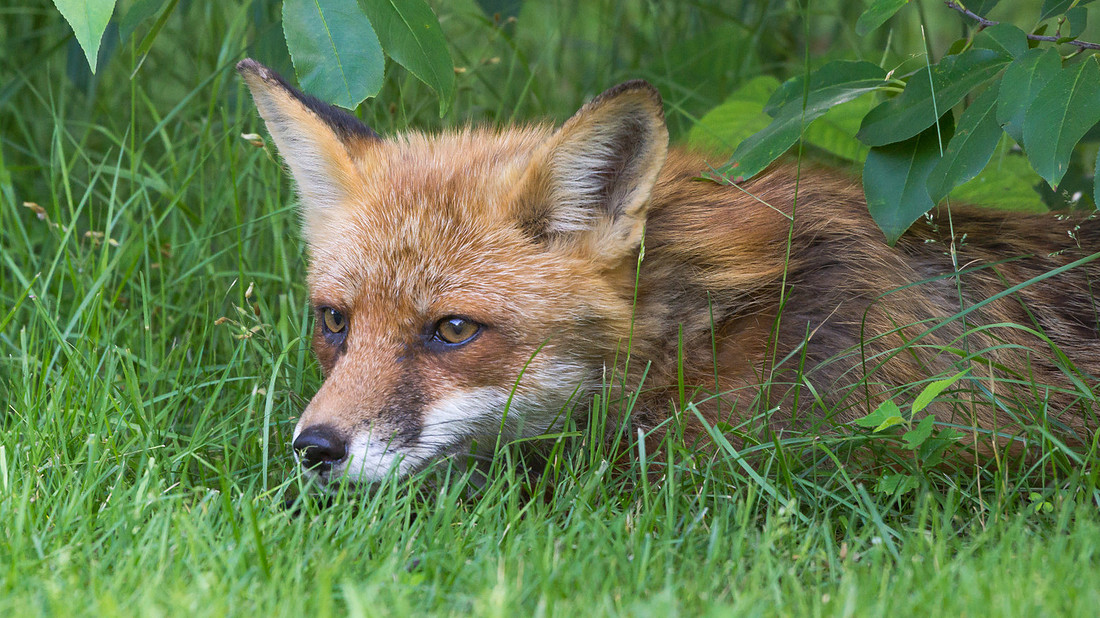

Dad resting under a bush
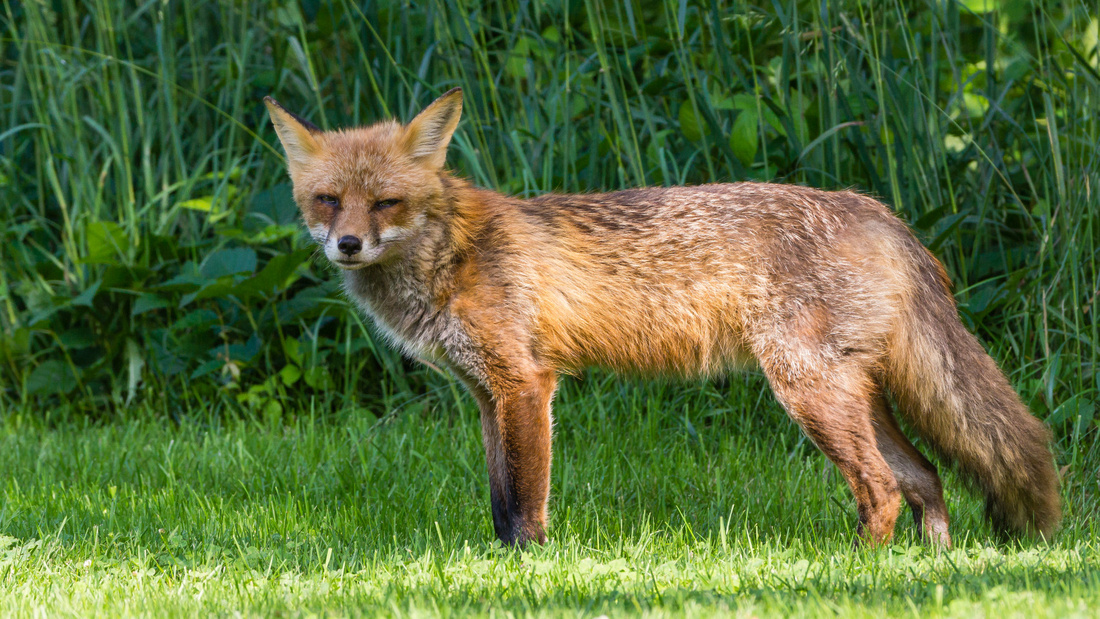

Dad from ground level
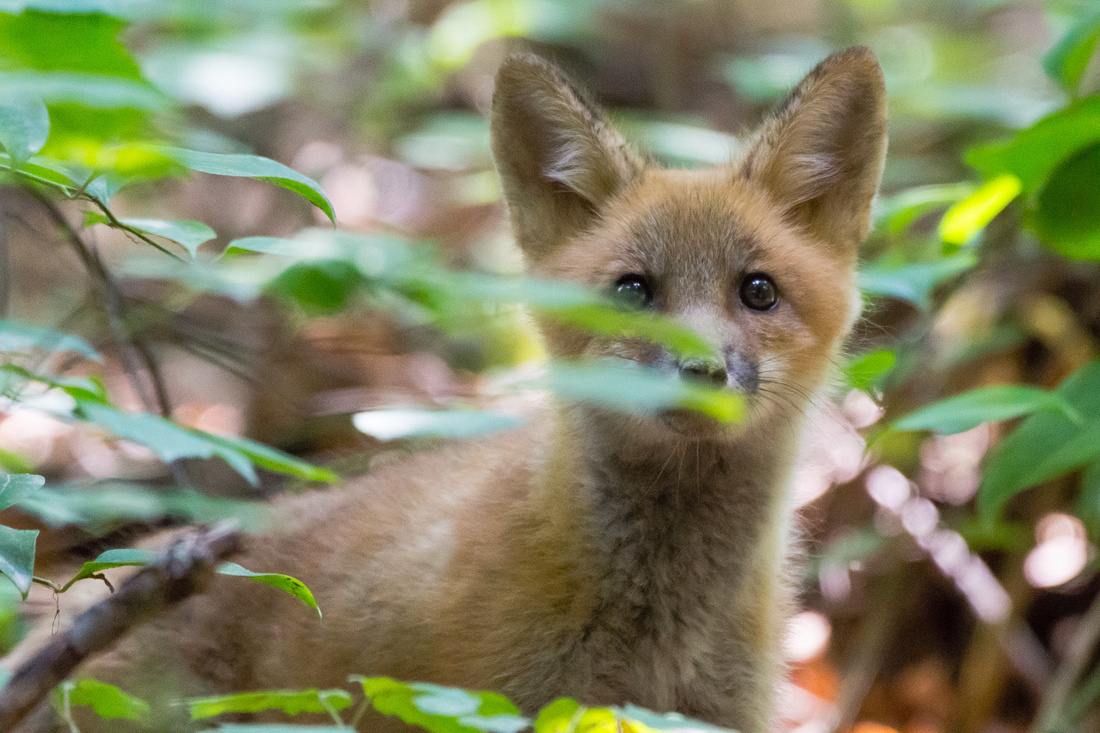

June 9th in the ground cover


Dad with a chipmunk
Shooting small birds in flight - the easy way
Shooting birds in flight (BIF) is one of the more difficult aspects of wildlife photography. I've never been particularly good at it, but occasionally get lucky.
Two situations generally arise - one with a busy background (trees, buildings, etc) or one with a reasonably clear sky. The first situation is significantly more difficult than the second. With a busy background, you have to use spot (or possibly zone - a group of a few spots) focusing and track the bird while keeping the focus spot precisely on the subject. Slower flying birds (herons, vultures, egrets, eagles, etc.) are generally easier, so they are good for practice. Hawks are more difficult, but not nearly as difficult as small birds - unless you have a clear background and a camera with a fast auto-focusing lens.
There is a Martin house near my home on a local pond. In the spring and summer, the Purple Martins are very active around the house in nice weather. Often, there are as many as 15 or 20 birds flying around the house gathering nest building materials. The house is on a tall pole out in the open on the bank of the pond providing a nice clear background above the horizon.
In this situation, I can set my camera on wide area auto-focus (WAF) since I'll be shooting against a clear background - the sky. Using WAF, the camera will focus on anything in the frame creating contrast. Since the bird is the only contrasty thing in the viewfinder, that's what the camera focuses on.
With most BIF shooting, it is best to keep your shutter speed above 1/1200 of a second. This keeps motion blur to a minimum. With small fast flying birds even higher shutter speeds may be necessary. I use aperture priority (I set the aperture and let the shutter speed vary) and set my ISO to 400. This tends to keep my shutter speed above 1/1200 and gives me reasonable control over image sensor noise (graininess in the photos). Lower ISO is usually more desirable, but with my Sony A-77, ISO-400 is a good compromise. My lens (Sony 70-400mm f4-5.6 G2) is very sharp shooting wide open, but even better shooting at f8. Depending on the amount of light available, I adjust my aperture to keep my shutter speed above 1/1200th with f8 being ideal. F8 also provides a little more depth of field (DOF - the depth of the area in focus) than shooting wide open. Also, since the background is brighter than the subject, I set my exposure compensation to a plus 1.3 - 2.0 again, depending on the amount of light available. This tends to get the best exposure on the bird. Finally, it is best to have the sun behind you as much as possible. This places more light on the subject, will require less exposure compensation and make it easier to see the fast moving bird in the viewfinder.
With the setting as described above, I stand within about 20-30 feet from the Martin house, select a focal length somewhere between 100-200mm, pre-focus on the house and wait until a bird(s) are circling. All that is required is to find the bird in the viewfinder and fire away. The camera & lens will generally do the rest. My keeper rate using these setting is in the 50% range. I've also used slower focusing lenses - the Minolta 70-210mm F4 and the Minolta 75-300mm f4.5-5.6. They are slower focusing, but I can still get usable images. However, the keeper rate is lower.
Here's a few Purple Martin photos I took recently using the above techniques. All were shot in RAW format and processed using Adobe Lightroom 5.2. Even adjusting my exposure compensation when shooting, I usually had to increase the exposure on the subject in post processing for the best result.
